BirdNote Daily
Escape the daily grind and immerse yourself in the natural world. Rich in imagery, sound, and information, BirdNote inspires you to notice the world around you.
Birds Move from Fresh to Salt Water
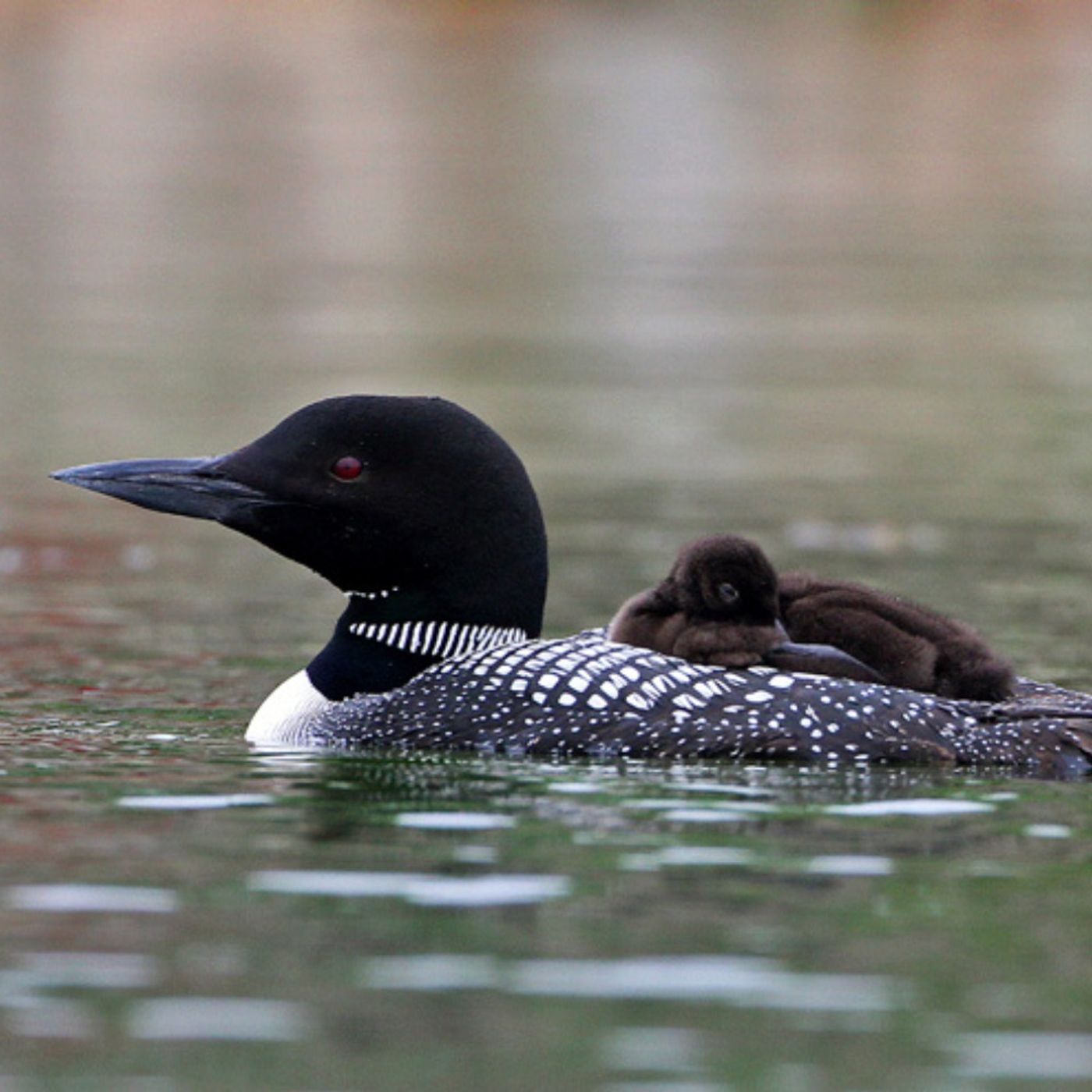
To hear a Common Loon in the wild during summer, you’ll need to find a northern, freshwater lake where a pair is nesting. But to find that same Common Loon in winter, you’ll likely need to look on a saltwater bay. This shift from fresh to salt water would kill most animals. But loons — along with many ducks and other water birds — have evolved to make that move. It’s possible that breeding adults nest on fresh water in order to save their energy for raising chicks.
More info and transcript at BirdNote.org.
Want mor...
Birdsong and Solitude
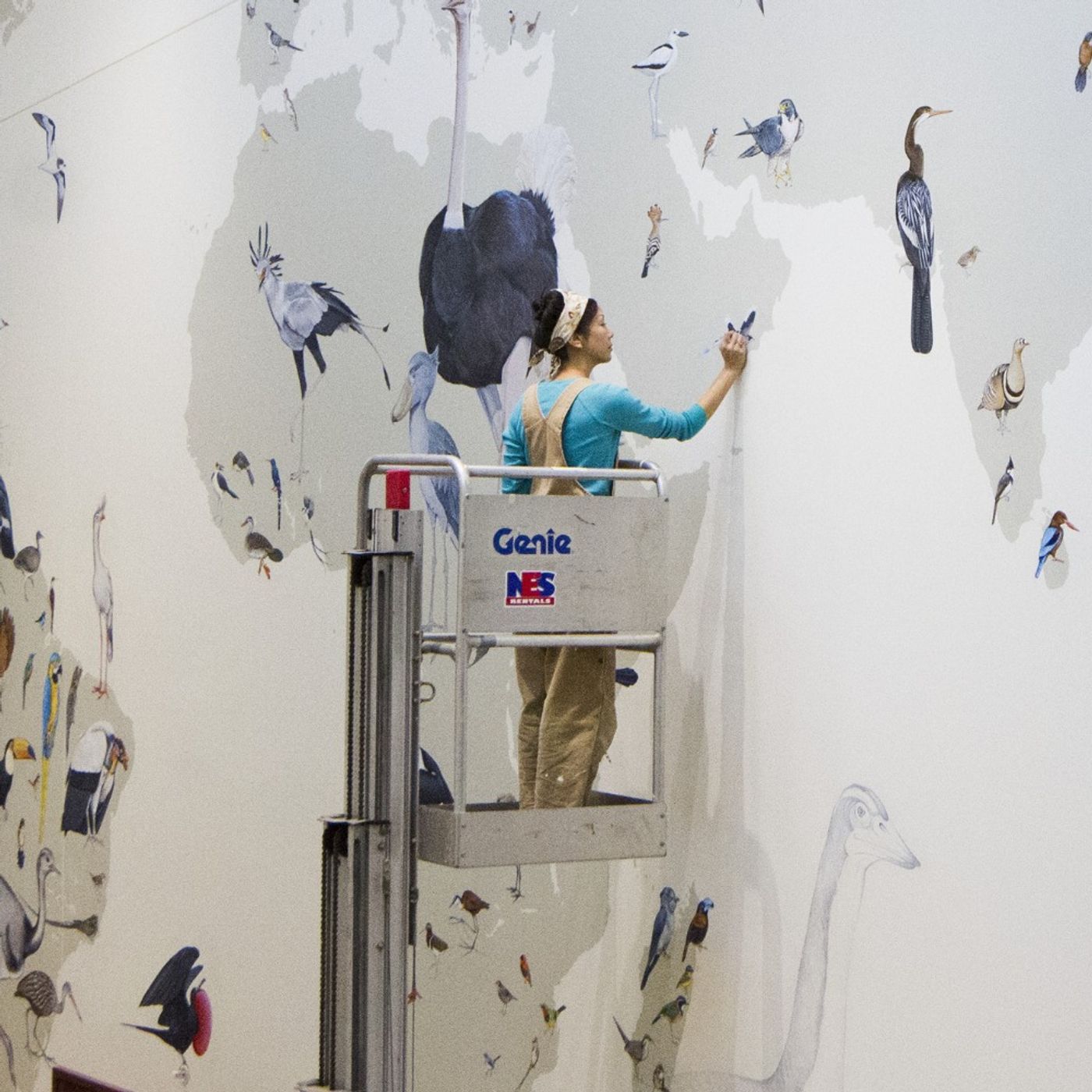
The Wall of Birds at the Cornell Lab of Ornithology is a towering mural showing nearly 250 life-sized birds across a map of the world. To complete the impressive artwork, artist and scientific illustrator Jane Kim spent 17 months painting day in and day out. Though the experience was often solitary, Jane stayed connected to the outside world through the sounds of wildlife in the nature preserve that surround Cornell Lab.
Read more about Jane Kim and the Wall of Birds in Field Notes!
More info and transcript at BirdNote.org.
Want more BirdNote? Subscribe...
Letter to a Dark-eyed Junco
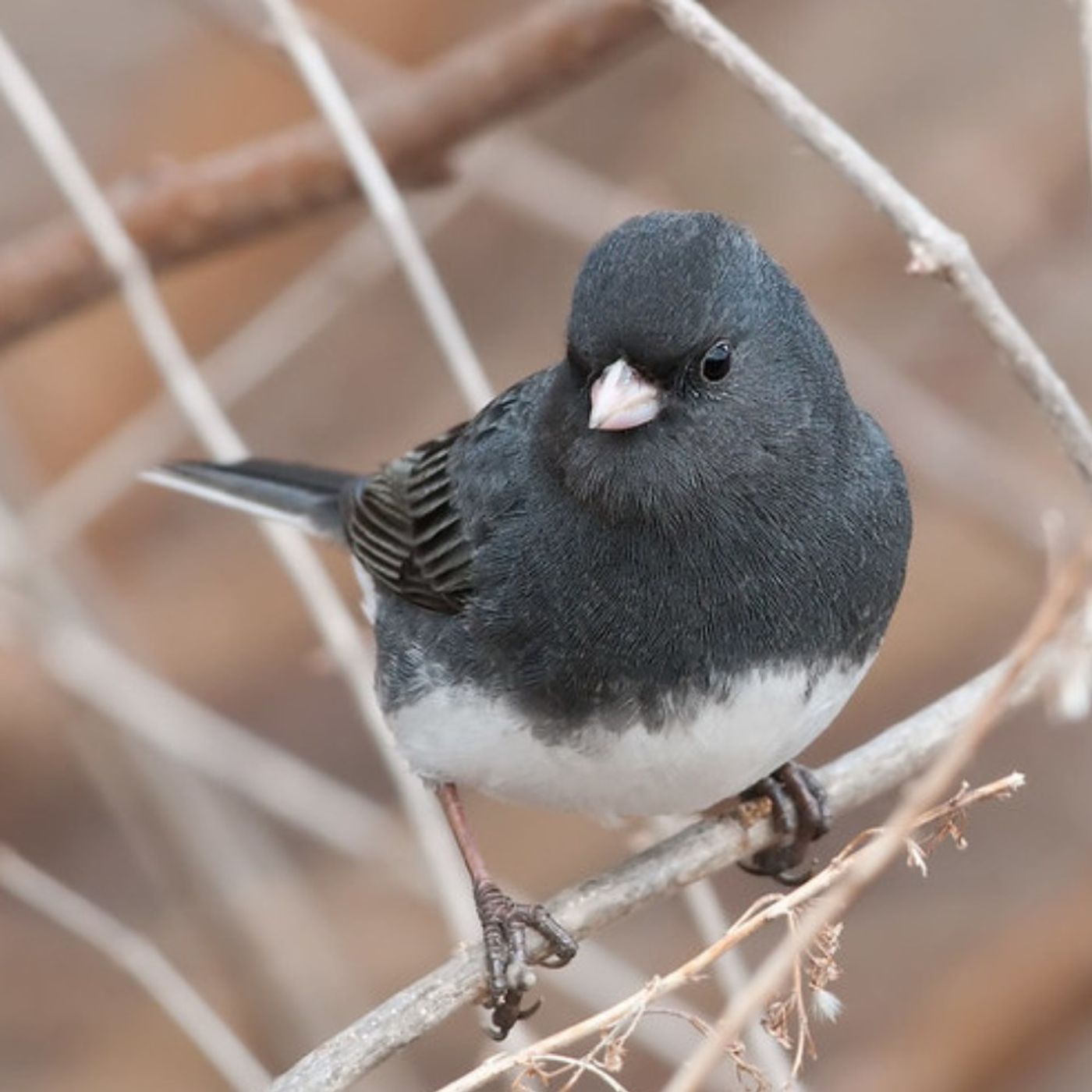
Writer and ornithologist J. Drew Lanham shares a note he has written to a Dark-eyed Junco, which he fondly nicknames “snowbird.”
More info and transcript at BirdNote.org.
Want more BirdNote? Subscribe to our weekly newsletter. Sign up for BirdNote+ to get ad-free listening and other perks.
BirdNote is a nonprofit. Your tax-deductible gift makes these shows possible.
Hosted by Simplecast, an AdsWizz company. See pcm.adswizz.com for information about our collection and use of personal data for advertising.
Why Birds Eat Snow
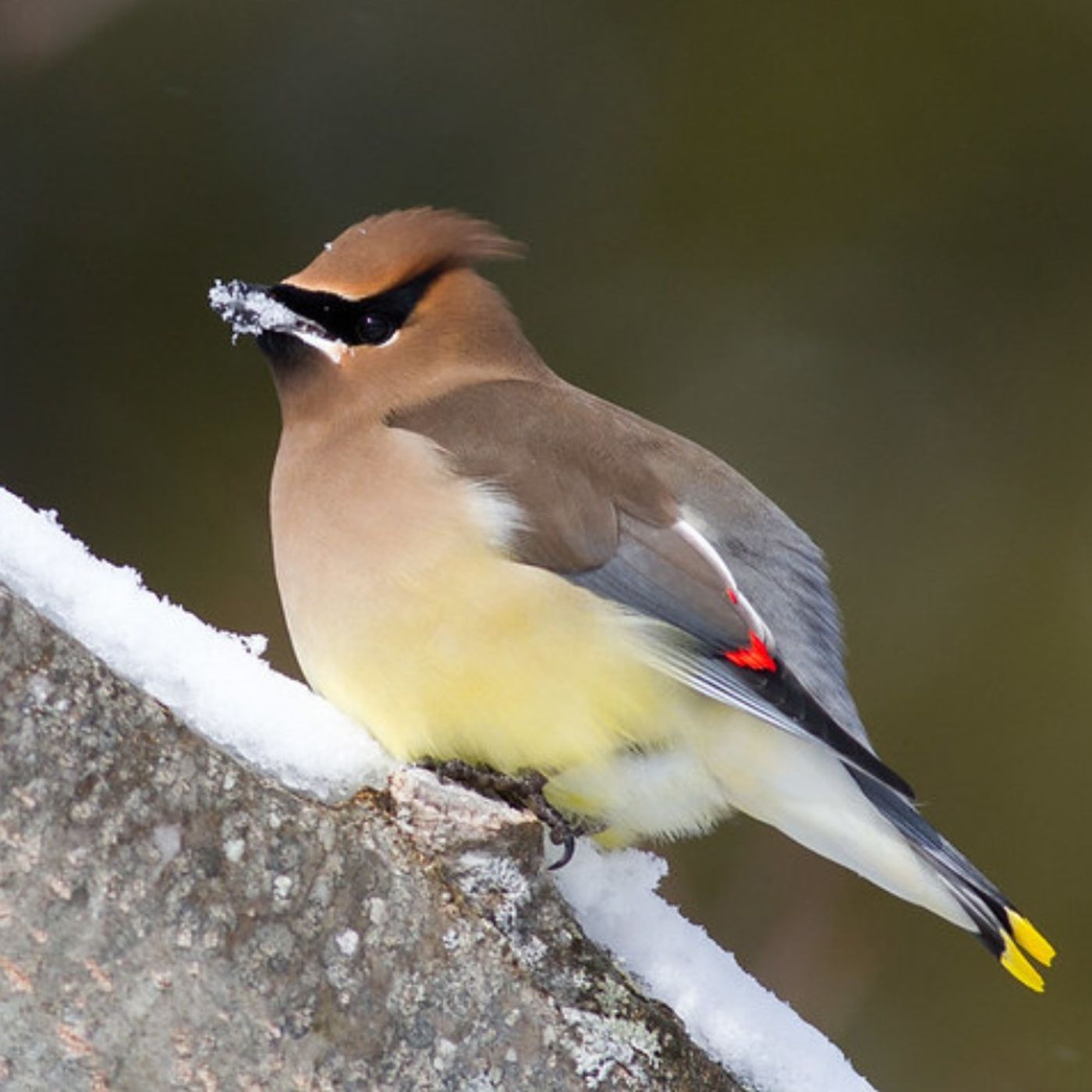
In the depths of winter, when open water is frozen over, it can be challenging for birds to stay hydrated. Some birds eat the frozen water all around them. Cedar Waxwings catch snowflakes in mid-air. Black-capped Chickadees drink from dripping icicles. Plenty of other birds scoop up fresh, powdery snow and eat it. It could be worth the calories to melt the snow when searching for liquid water could expose them to predators.
More info and transcript at BirdNote.org.
Want more BirdNote? Subscribe to our weekly newsletter. Sign up for BirdNote+ to get ad-free...
Building Birds with LEGO
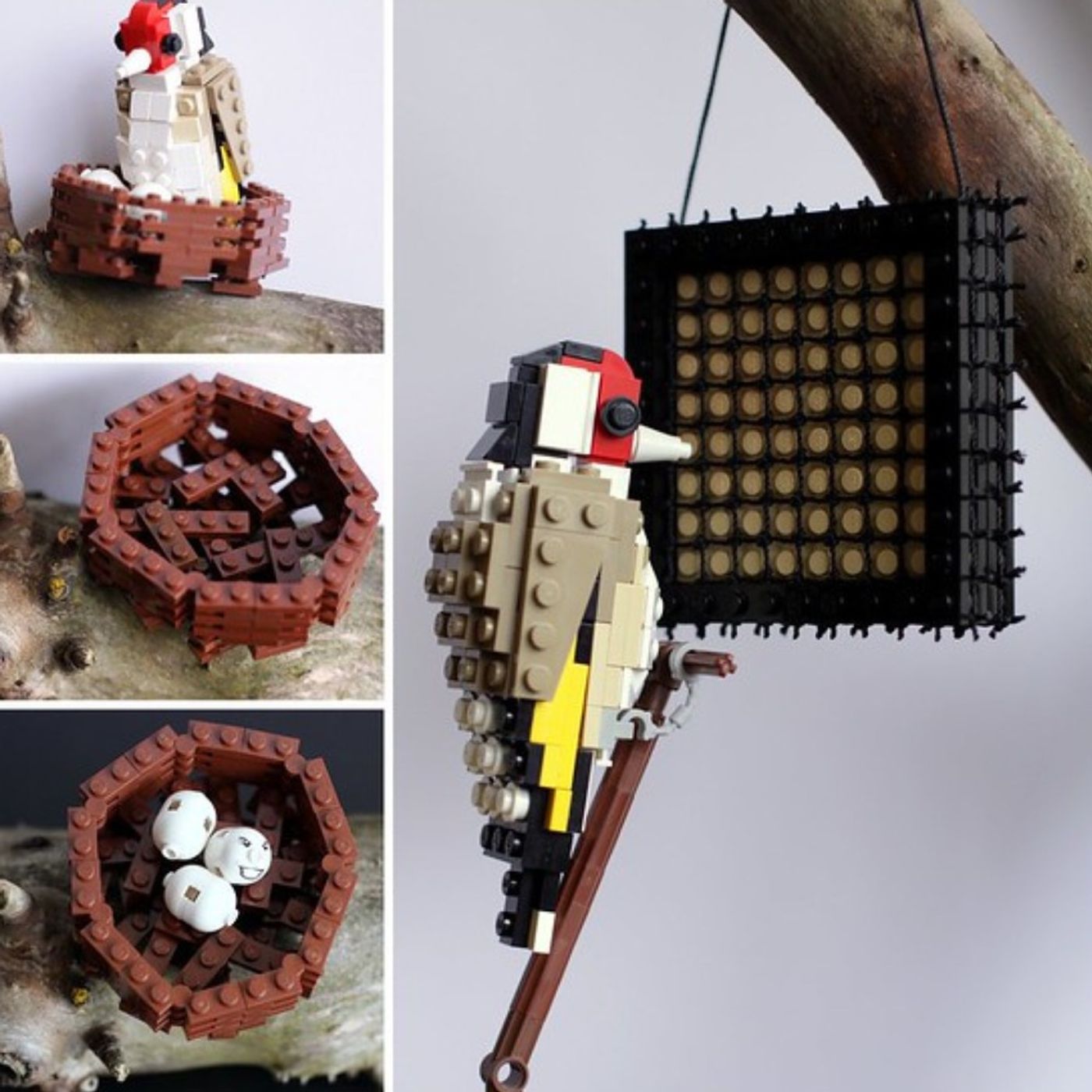
Thomas Poulsom is a hobbyist LEGO builder best known for his models of birds. But making birds out of bricks isn't easy. That’s why he uses special pieces to sculpt something entirely different — like when minifigure carrots became a puffin’s legs. A unique piece called a “snot brick” allows him to build in any direction, making it possible to make a round object out of square LEGO bricks.
More info and transcript at BirdNote.org.
Want more BirdNote? Subscribe to our weekly newsletter. Sign up for BirdNote+ to get ad-free listening and other perks.
Painting Birdsong with Jane Kim
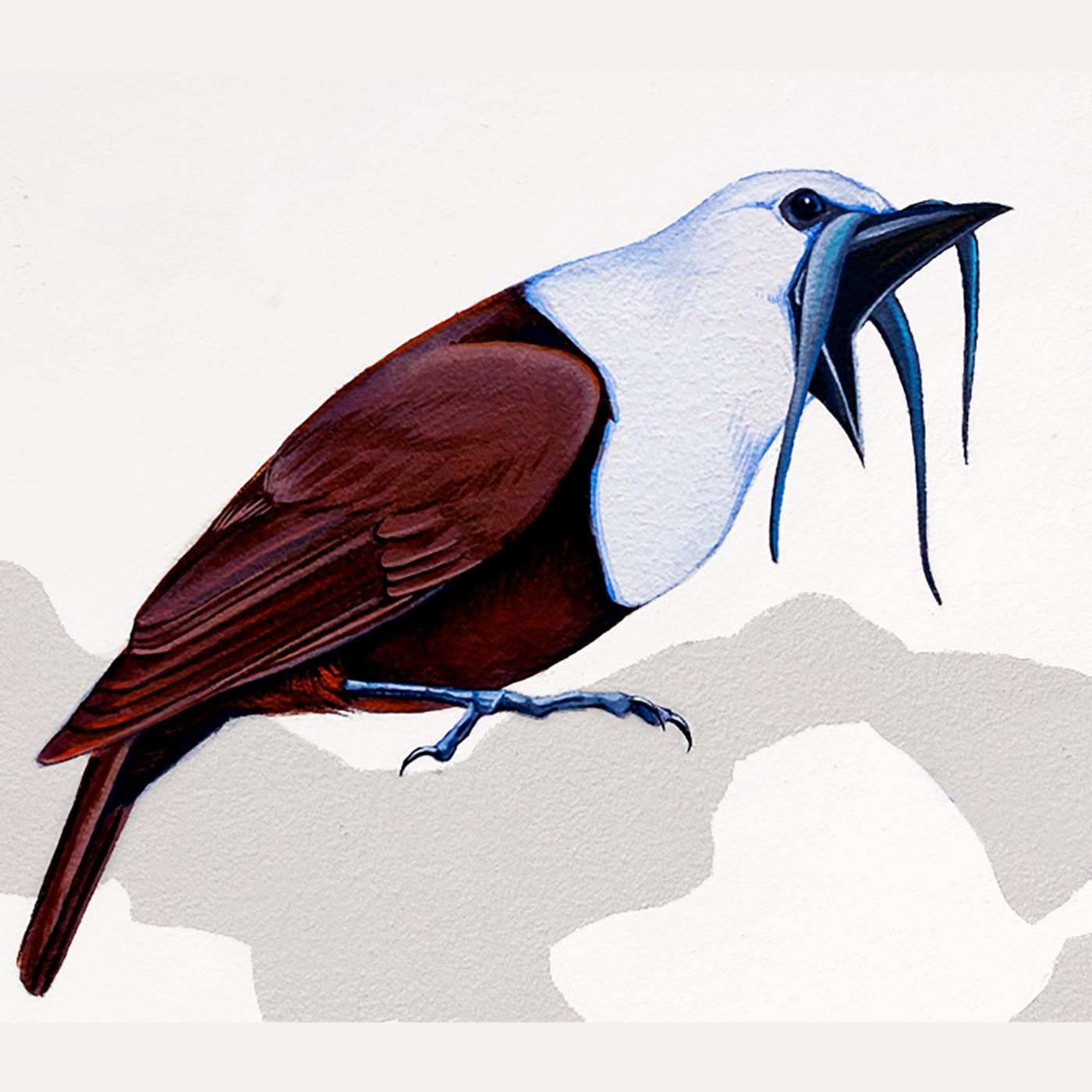
At the visitor center of the Cornell Lab of Ornithology, artist and scientific illustrator Jane Kim painted the Wall of Birds to celebrate the evolution and diversity of birds. Completed in December 2015, the massive mural depicts nearly 250 birds — and several of their ancient predecessors — on a map of the world where each lives. Jane worked closely with scientific advisors to ensure that each portrait accurately represents the bird's features and behaviors, including many species — like the Three-wattled Bellbird — that appear to sing from their place on the wall.
Read more about Jane Kim in Field Notes!
More i...
Dining with Sanderlings
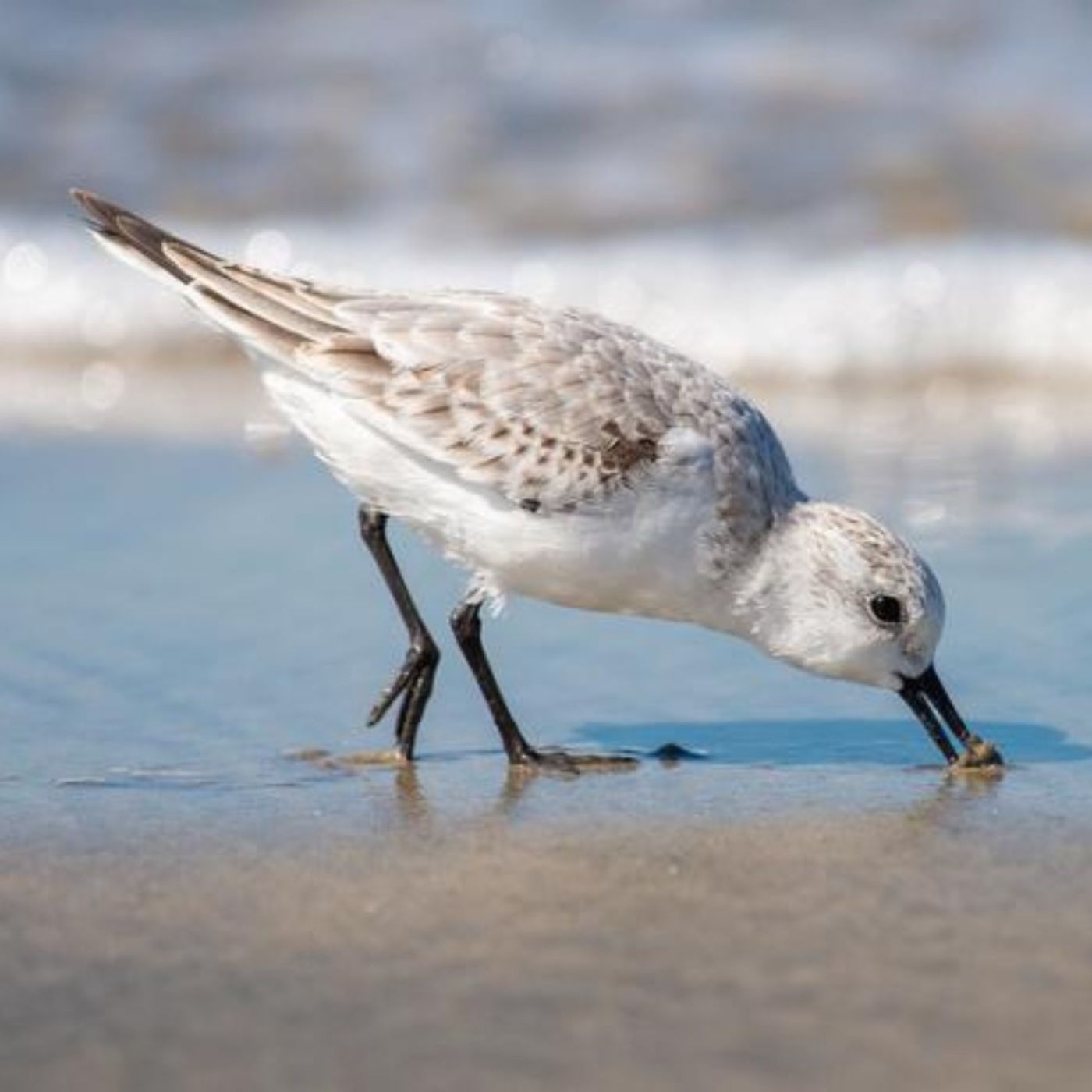
While many shorebirds have gone south, tiny sandpipers called Sanderlings are easy to find on winter shores. They follow the waves as they lap in and out, probing the swirling sand for prey. They often eat various small crustaceans such as mole crabs, isopods, and amphipods. But they also enjoy miniature clams, polychaete worms, and horseshoe crab eggs. They’ll even catch flying insects or eat plant matter.
This episode is dedicated to Deb Rivel, for her many years of board service and generous support of BirdNote.
More info and transcript at BirdNote.org.
...
Kittiwake, Kittiwake
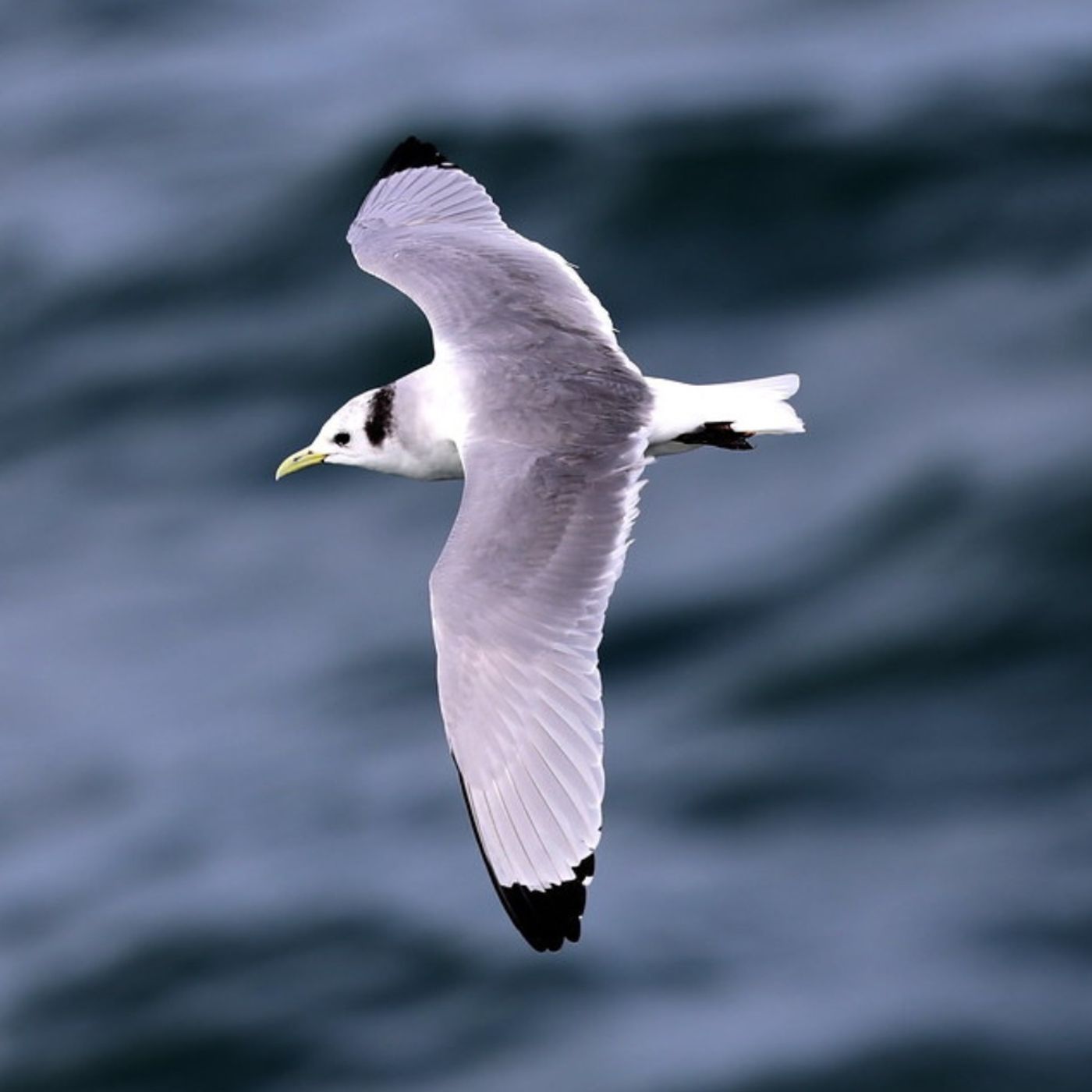
Named for its rhythmic calls, the Black-legged Kittiwake is a dapper, oceanic gull. As described by Roger Tory Peterson, the tips of its pale gray wings "are cut straight across, as if they had been dipped in ink." Unlike many gulls, kittiwakes spend most of the year at sea and are seldom seen inland.
More info and transcript at BirdNote.org.
Want more BirdNote? Subscribe to our weekly newsletter. Sign up for BirdNote+ to get ad-free listening and other perks.
BirdNote is a nonprofit. Your tax-deductible gift makes these shows possible.
...
Andean Condors Sail the Wind
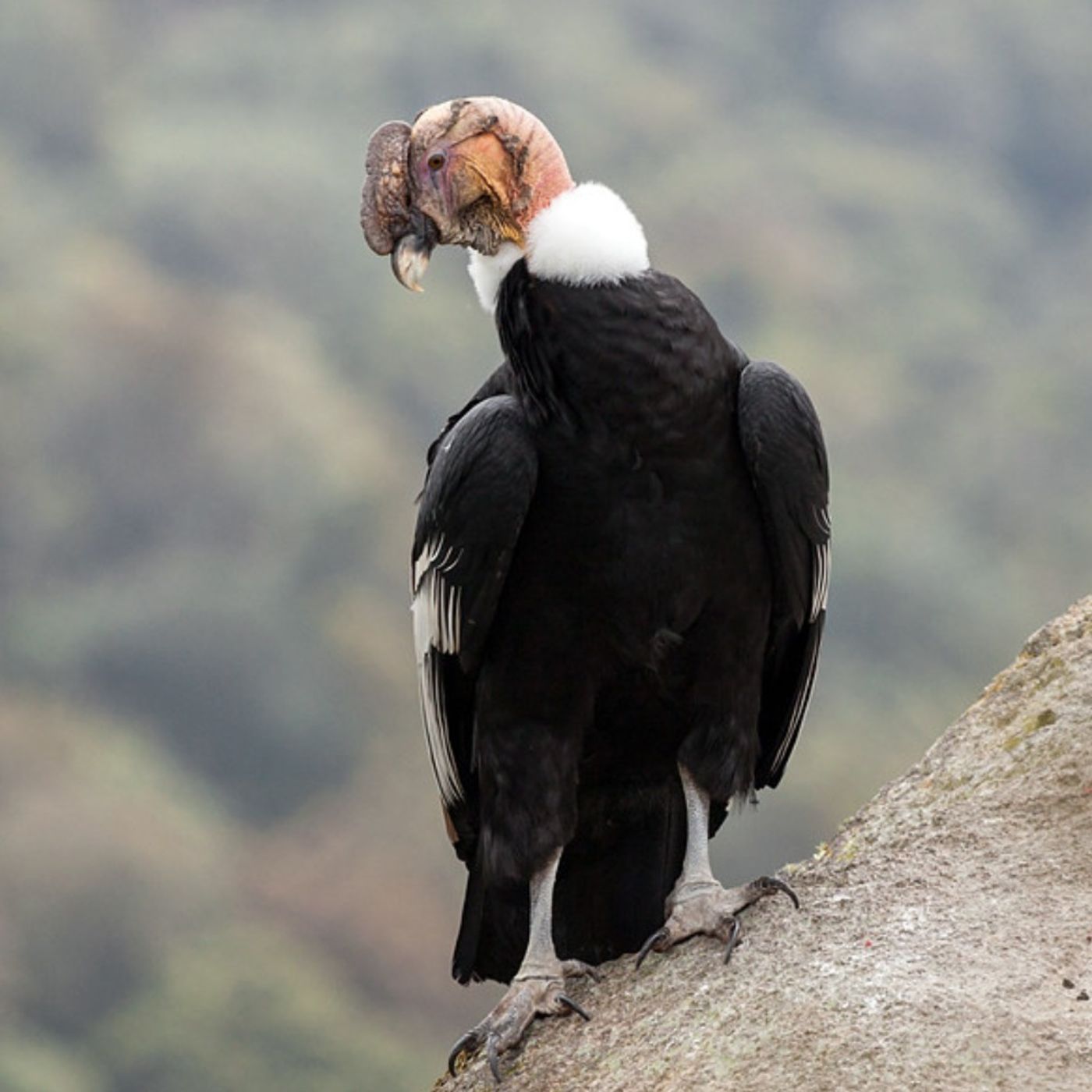
The Andean Condor is one of the largest flying birds in the world. With a wingspan that can stretch over 10 feet across, the condor doesn’t flap so much as sail, using rising thermals to glide across the Andes for hours. Once revered in Inca mythology as a messenger of the gods, the Andean Condor now graces the coat of arms of Bolivia, Chile, Colombia, and Ecuador. But like many scavengers, condor populations are declining due to threats like lead poisoning and habitat loss.
More info and transcript at BirdNote.org.
Want more BirdNote? Subscribe to...
Sandhill Crane Families Stick Together
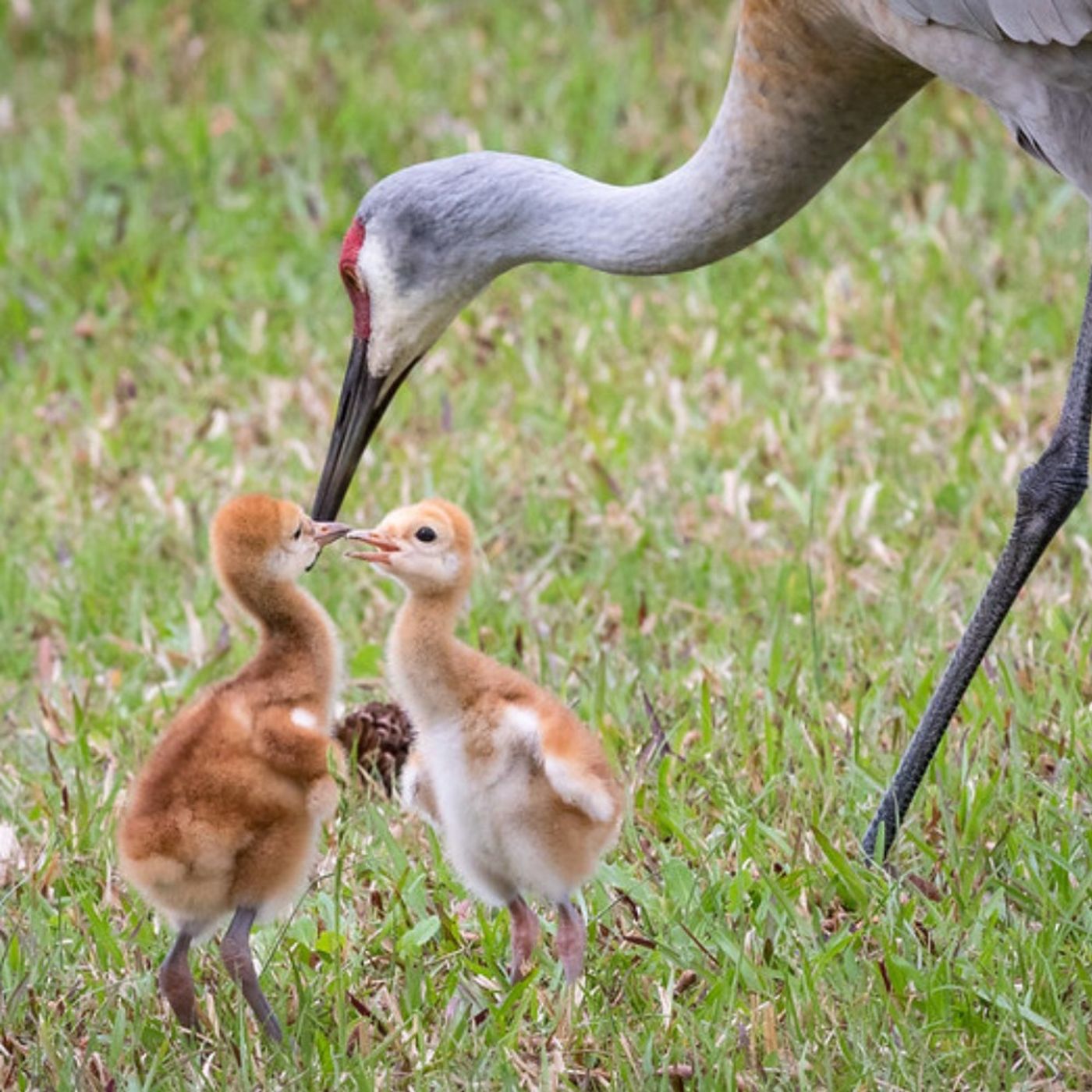
Sandhill Crane families form a close bond. A pair of adults might travel north with their young from the previous summer, along with grown-up offspring from several years ago. After the breeding season, families will stick together for the journey south and the winter, even in large flocks. The parents often remain together for the rest of their lives.
More info and transcript at BirdNote.org.
Want more BirdNote? Subscribe to our weekly newsletter. Sign up for BirdNote+ to get ad-free listening and other perks.
BirdNote is a nonprofit. Your tax-deductible gift makes t...
Seabirds, Trees and Coral
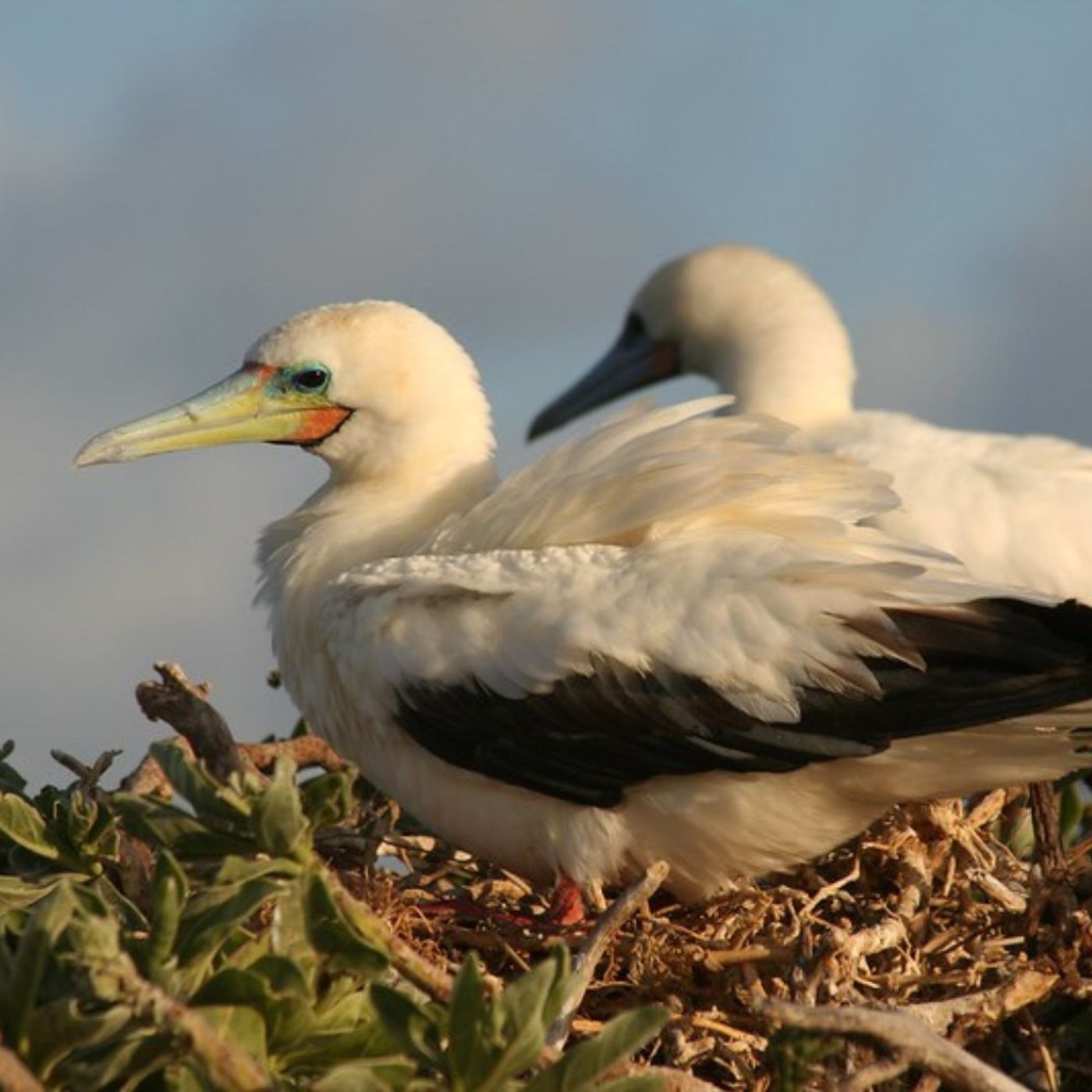
Palmyra Atoll is a ring-shaped island encircling a lagoon in the South Pacific. The atoll lost many native trees due to U.S. military activity during World War II. Conservationists have worked to restore the ecosystem. Seabirds such as Black Noddies and Red-footed Boobies nest in the island’s rainforest. Their guano enriches the soil, and the soil’s nutrients help support the coral ecosystem that provides fish for the birds.
More info and transcript at BirdNote.org.
Want more BirdNote? Subscribe to our weekly newsletter. Sign up for BirdNote+ to get ad-free listening and othe...
Museum Eggs Help Solve Mysteries
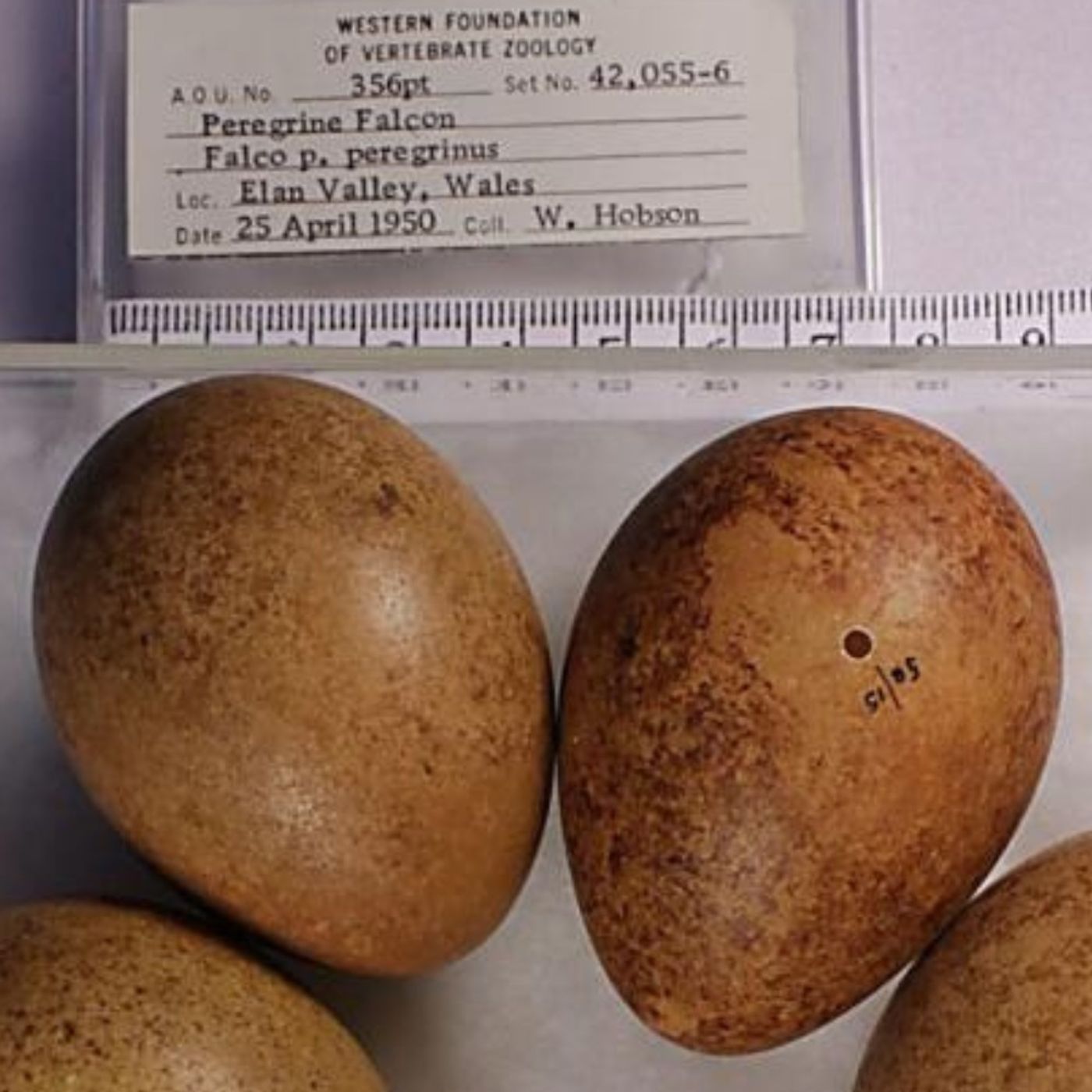
There are five million bird eggs stowed away in museums across the world — and the study of eggs, called oology, can give us great insight into birds. The link between DDT and the decline of Peregrine Falcon populations was identified in part using museum and personal egg collections, and this evidence helped lead to a ban on DDT. And today, Peregrines can still be seen zipping across the sky.
More info and transcript at BirdNote.org.
Want more BirdNote? Subscribe to our weekly newsletter. Sign up for BirdNote+ to get ad-free listening and other perks.
<...Kiwikiu
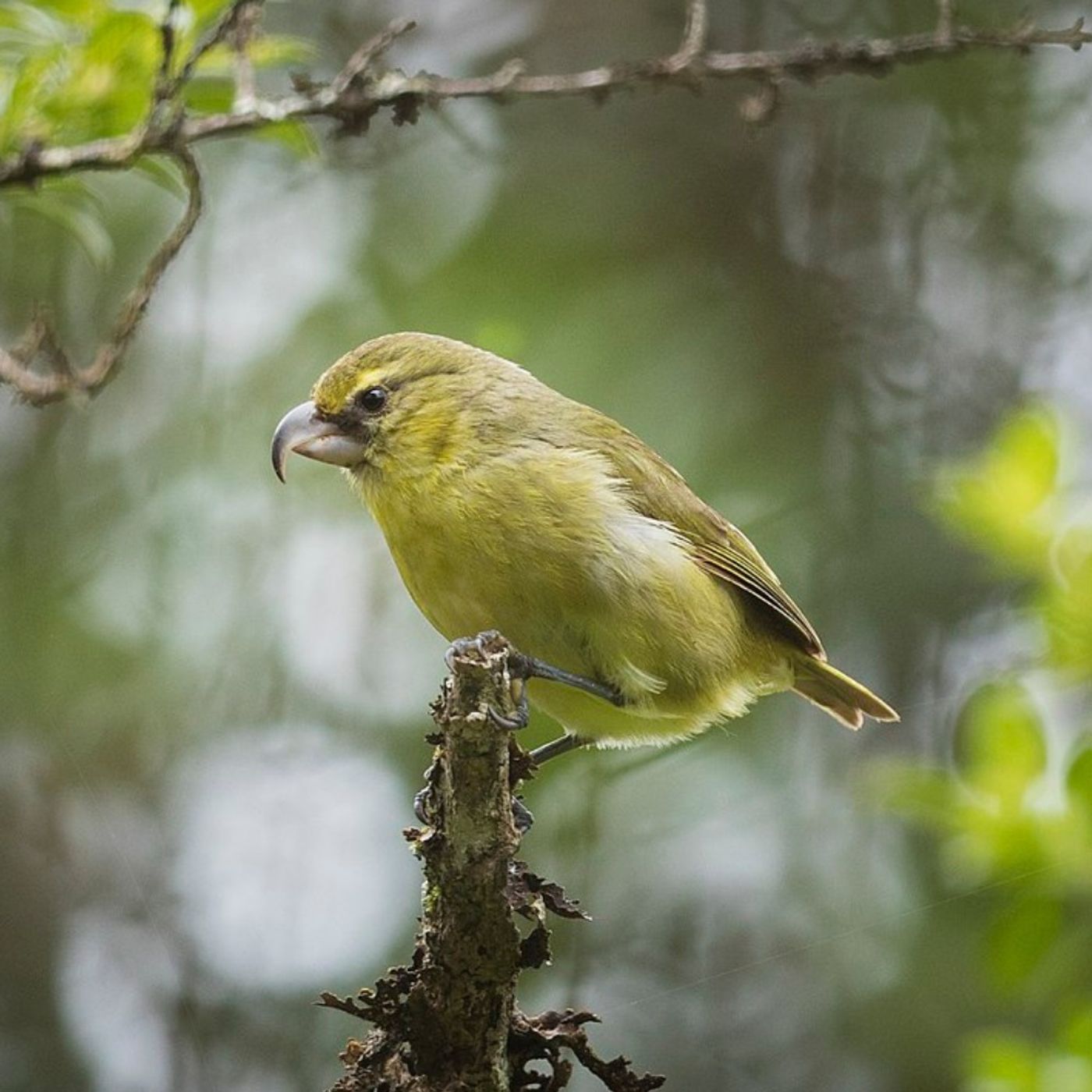
Kiwikiu, also known as Maui Parrotbill, used to be found all over Maui and Molokaʻi. Now, fewer than 150 individuals exist and kiwikiu are currently restricted to a tiny region of high elevation forest on the slopes of Haleakalā. A translocation effort to expand their range was unsuccessful due to the rapid spread of mosquito-borne avian malaria.
More info and transcript at BirdNote.org.
Want more BirdNote? Subscribe to our weekly newsletter. Sign up for BirdNote+ to get ad-free listening and other perks.
BirdNote is a nonprofit. Your tax-deductible gift makes these shows pos...
Altitudinal Migration
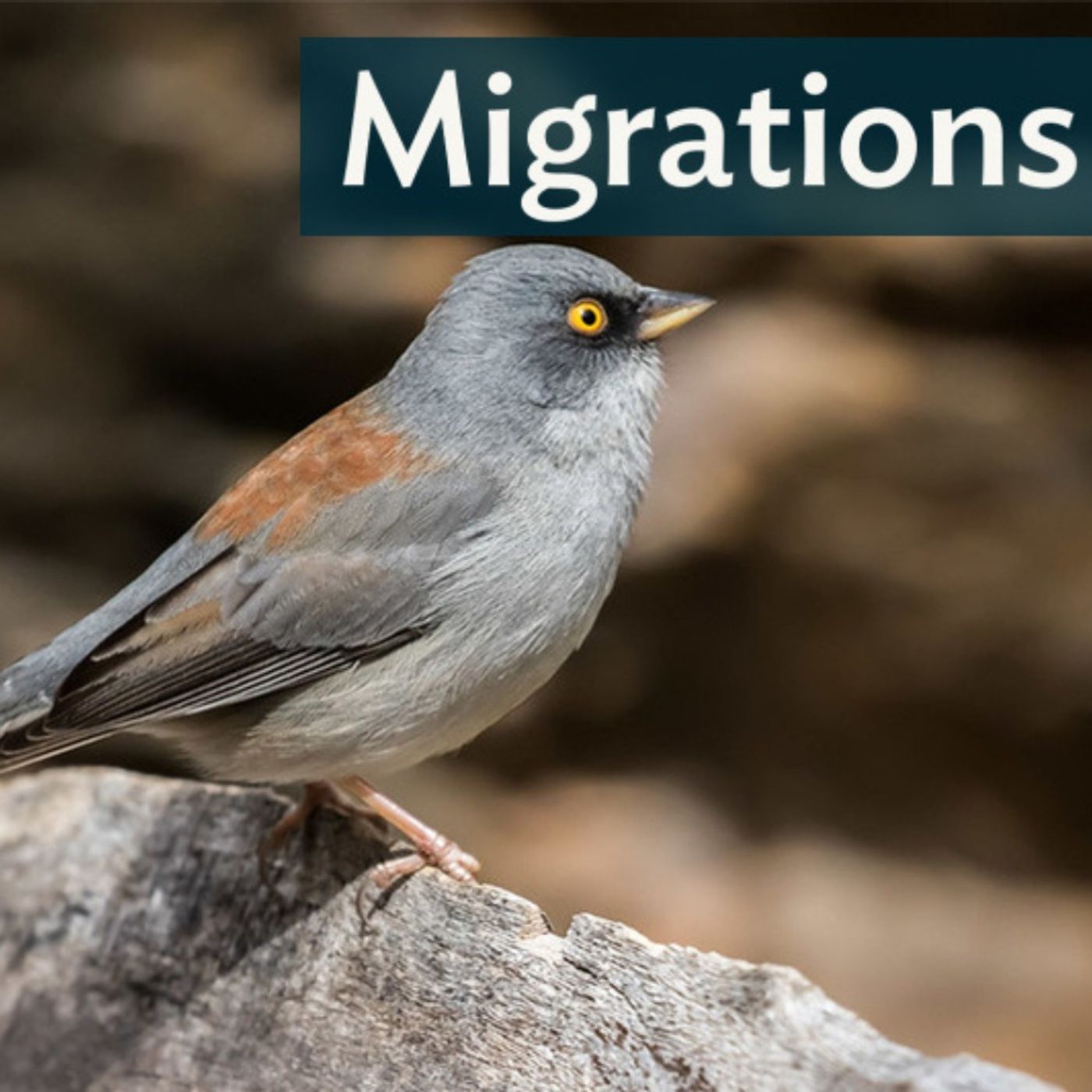
Yellow-eyed Juncos sometimes make a migration of sorts — not from north to south, but from the high mountains to the lowlands or the other way around. It’s called altitudinal migration. In the warm summer months, some Yellow-eyed Juncos prefer to nest at higher elevations. In winter, however, the scarcity of food pushes them back down to the valleys.
More info and transcript at BirdNote.org.
Want more BirdNote? Subscribe to our weekly newsletter. Sign up for BirdNote+ to get ad-free listening and other perks.
BirdNote is a nonprofit. Your tax-deductible gift makes these...
How Art Inspired a Young Birder
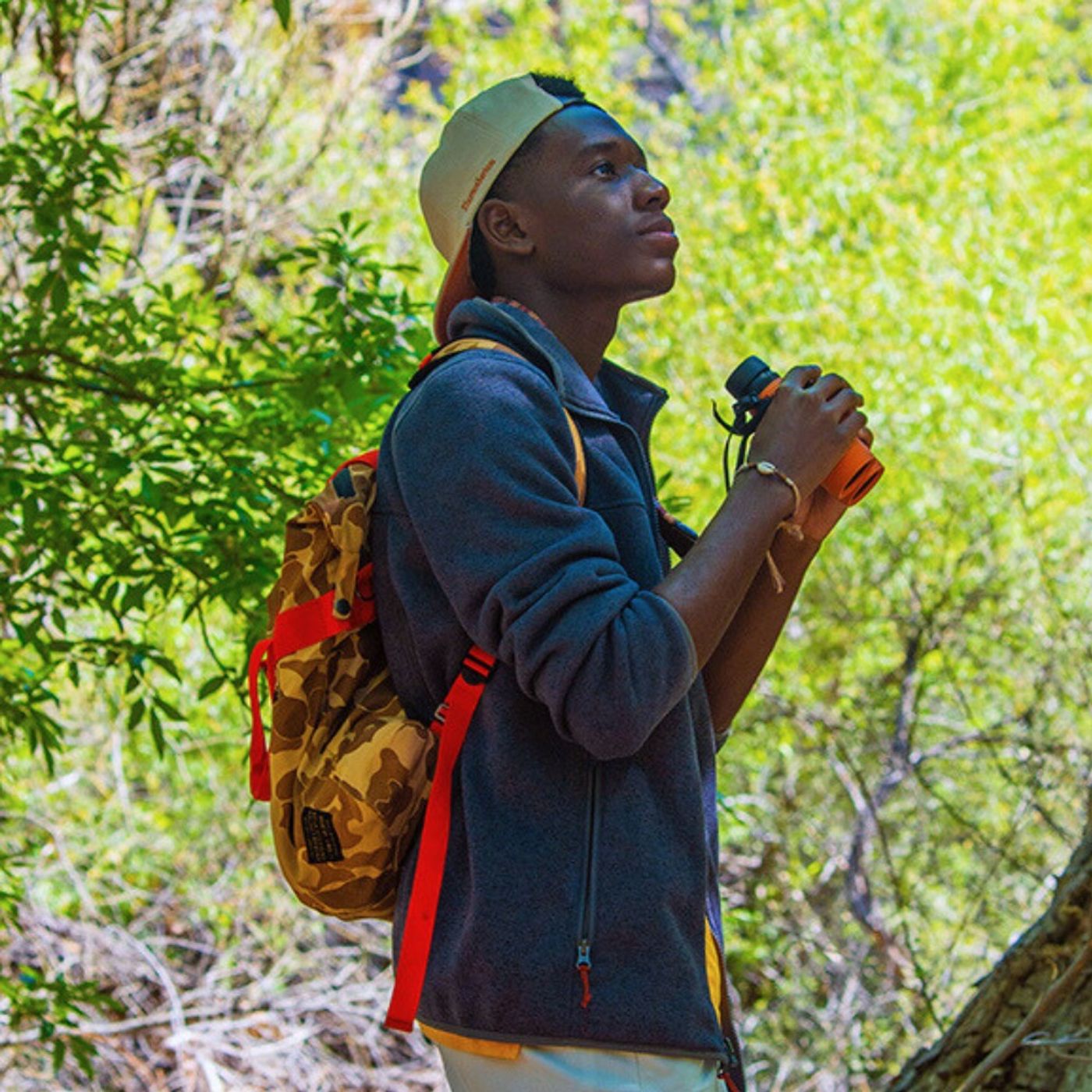
Isaiah Scott was in middle school when his family took him to visit the Cornell Lab of Ornithology. He remembers seeing a huge mural showing hundreds of colorful birds spread across a map of the world. That painting, called the Wall of Birds by Jane Kim, got Isaiah curious about how many of those species he might see for himself. In this episode, Isaiah shares how the artwork sparked his love of birding.
There’s more to our conversation with Isaiah Scott in season 4 of Bring Birds Back!
More info and transcript at BirdNote.org.
...A Song That Has Survived for Thousands of Years
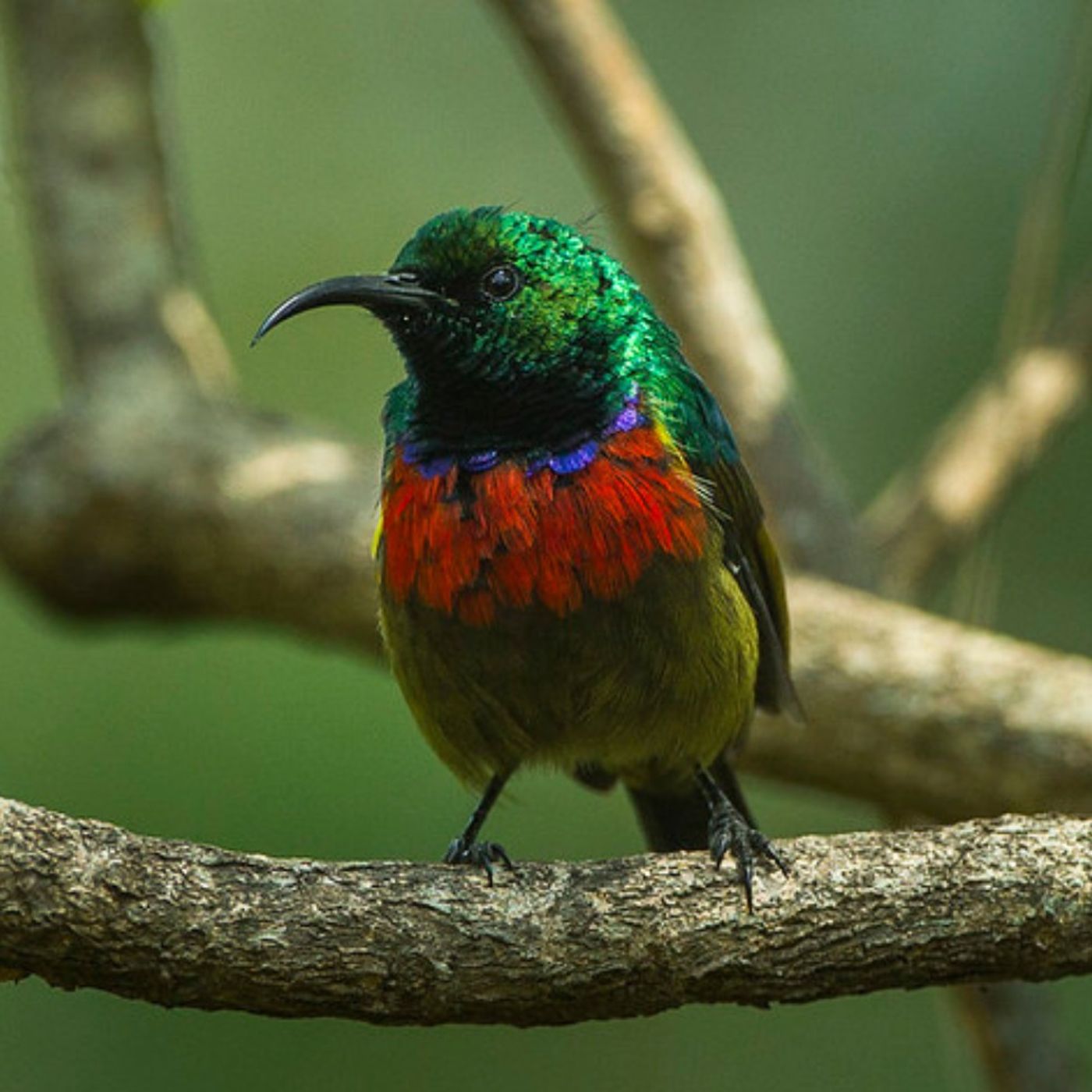
Sometimes, a species’ song changes over the course of a few decades. But a bird that lives in the mountains of eastern Africa, the Forest Double-collared Sunbird, appears to have kept the same song for at least 500,000 years. That’s the amount of time that two populations of the species split up into two separate mountain ranges. Despite a lack of contact between those populations, they sing a nearly identical song, suggesting that it’s very similar to the one their ancestors sang long ago.
More info and transcript at BirdNote.org.
Want more BirdNote? Subscr...
What Do Woodpeckers Do on Smoky Days?
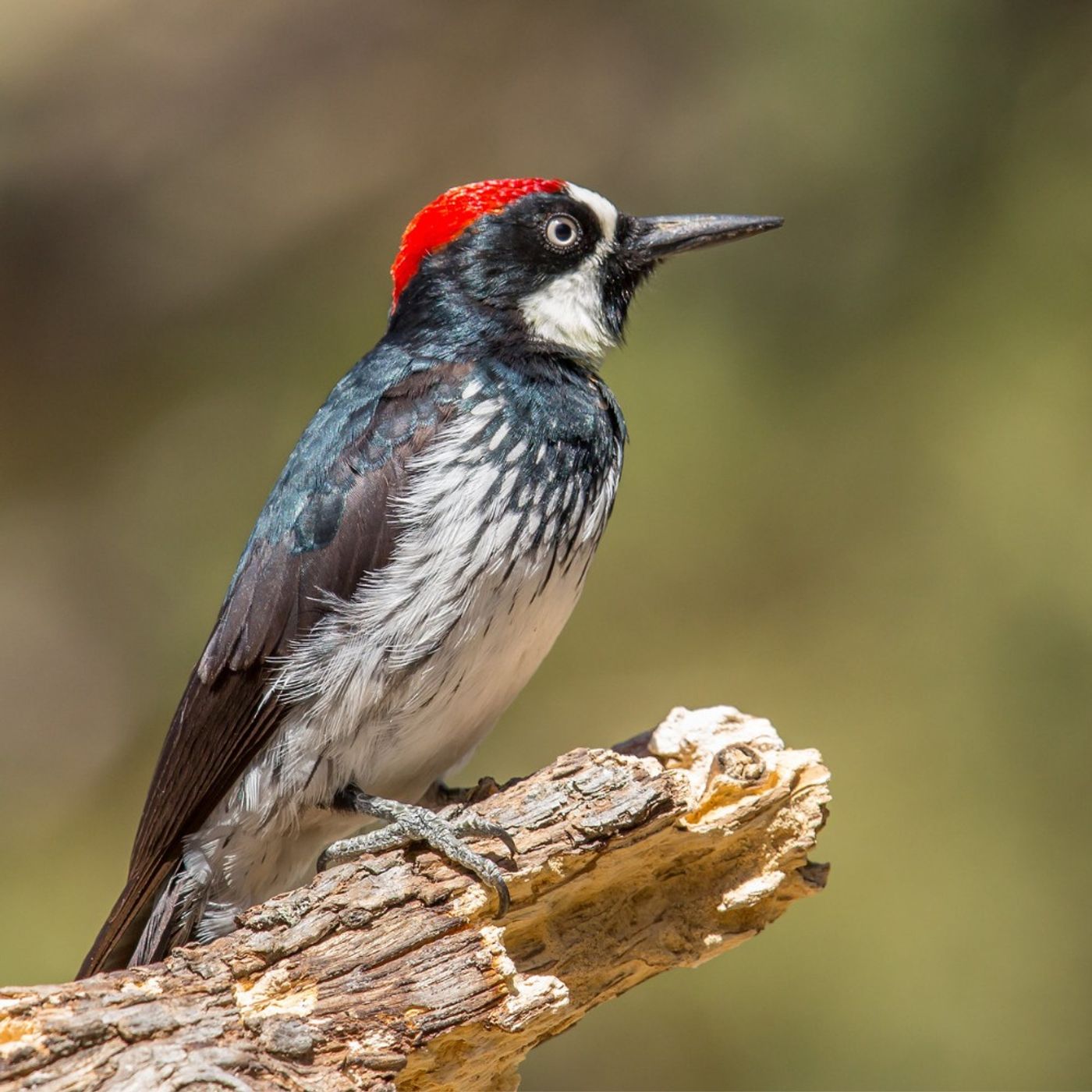
When the air is thick with wildfire smoke, people are advised to stay home. At Hastings Natural History Preserve in California, Acorn Woodpeckers do the same. These gregarious birds live in family groups and frequently visit their neighbors while foraging. Using tiny radio transmitters, scientists tracked the movements of Acorn Woodpeckers during the summer of 2020 when wildfire smoke blanketed the preserve. On smoky days, woodpeckers spent more of their time at home. And when they did leave their territories, they didn’t venture far and visited fewer neighbors than usual. Published in Current Biology in 2023, the findings suggest that ha...
Paradise-Whydah
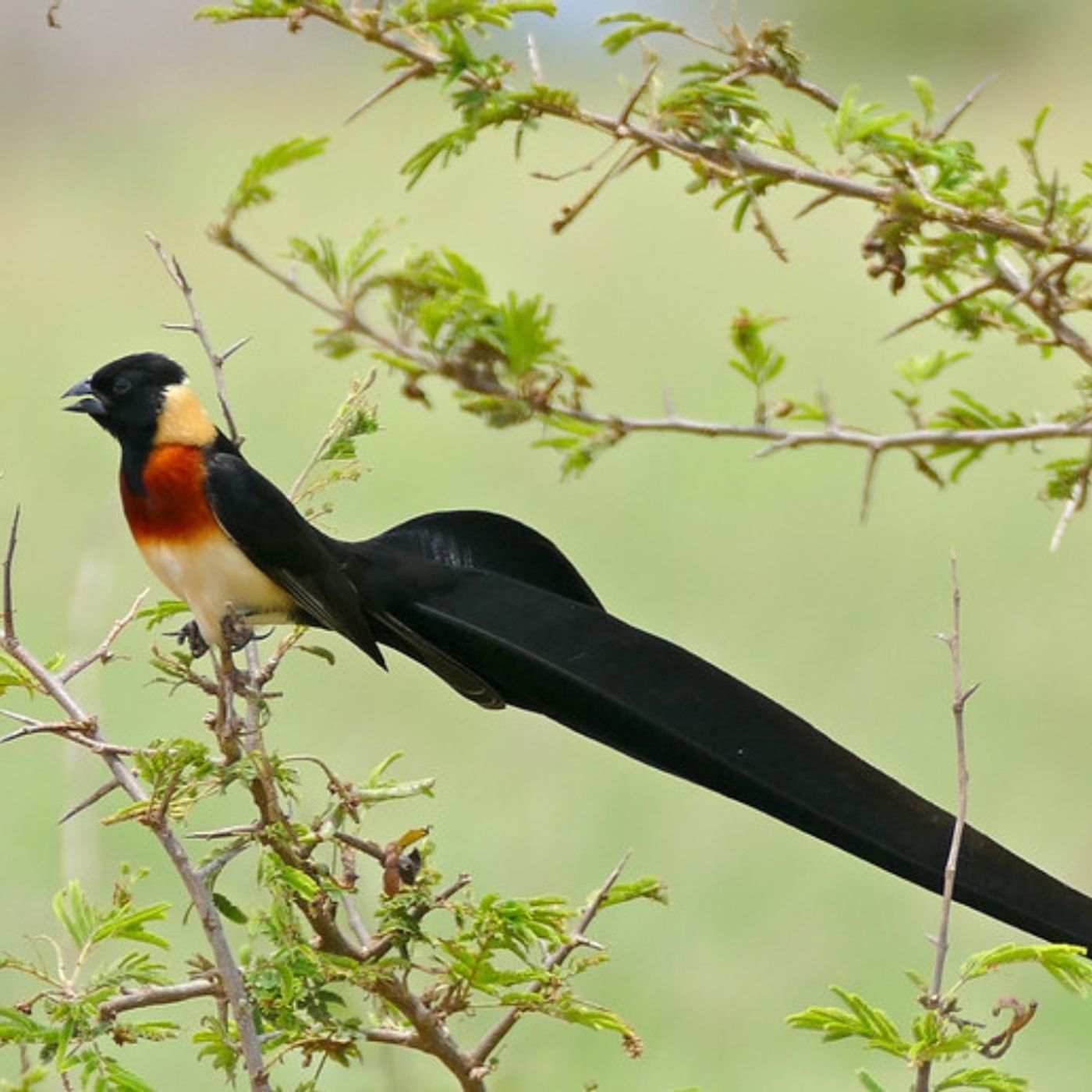
A few times each year, the Eastern Paradise-Whydah puts on his party clothes. This small finch is found in East Africa, and males and females generally share the same nondescript appearance. But when it’s time to mate, the male sprouts extravagant, long, black tail feathers two or three times the length of his body. The feathers make it look like he’s wearing a long black cape, thus the nickname, “widow bird.”
More info and transcript at BirdNote.org.
Want more BirdNote? Subscribe to our weekly newsletter. Sign up for BirdNote+ to get ad-free listenin...
In Winter, Puffins Lead Very Different Lives
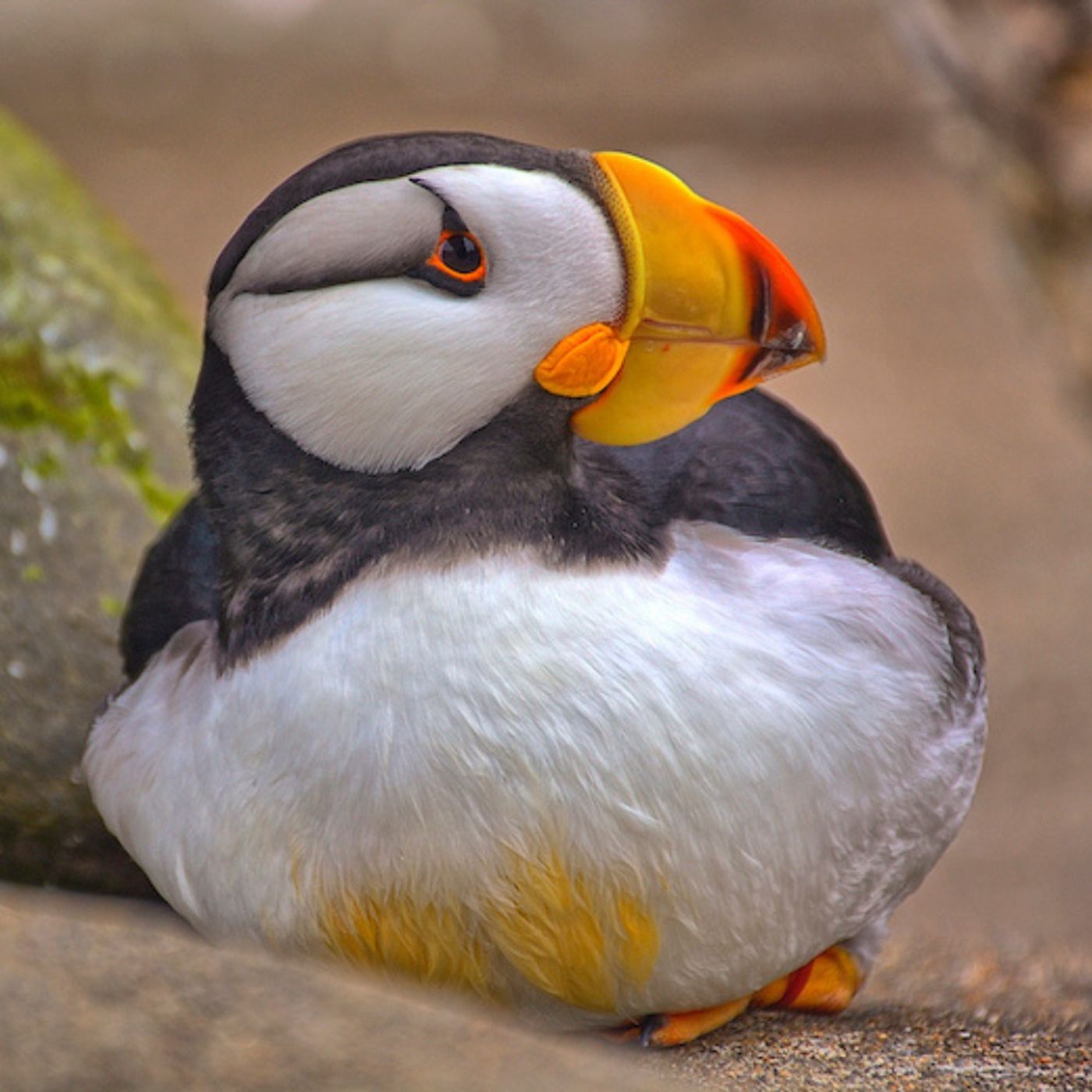
Every summer, puffins — like this Horned Puffin — grow blazingly colorful layers over the bases of their huge beaks. But in the winter, puffins lead very different lives, and they shed their bright ornamentation. Puffins in winter are largely solitary — and silent. They spend about seven months alone at sea, before returning once again to their colonies to breed.
More info and transcript at BirdNote.org.
Want more BirdNote? Subscribe to our weekly newsletter. Sign up for BirdNote+ to get ad-free listening and other perks.
BirdNote is a nonprofit. Your tax-deductible gift makes these shows p...
Double-jointed Hawks and Convergent Evolution
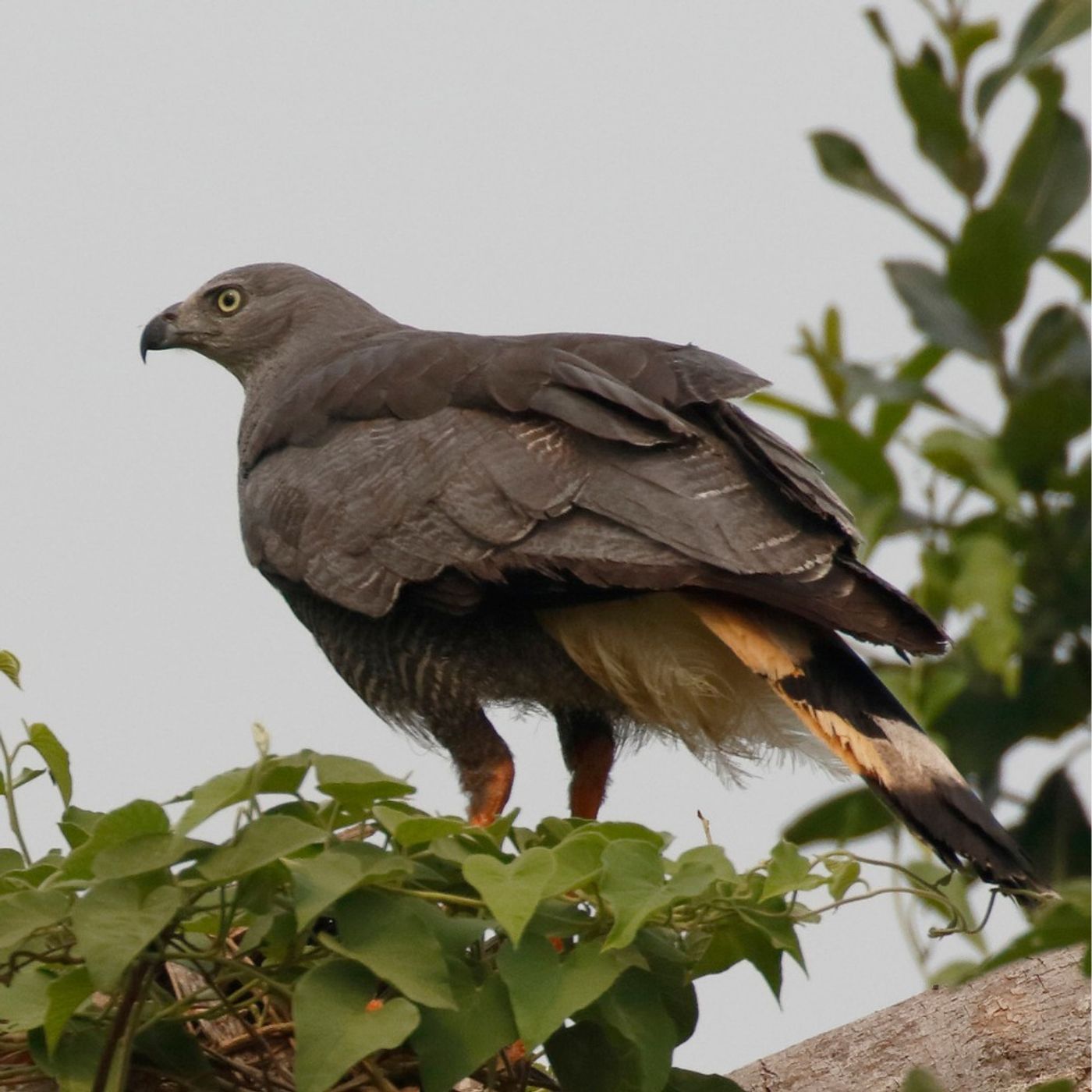
Crane Hawks of Central and South America and African Harrier-Hawks both have legs that bend forward and backward. Each bird’s wonderfully peculiar leg adaptation is completely original — it evolved all on its own — even though the end result is the same. It's a fascinating example of a phenomenon called convergent evolution.
More info and transcript at BirdNote.org.
Want more BirdNote? Subscribe to our weekly newsletter. Sign up for BirdNote+ to get ad-free listening and other perks.
BirdNote is a nonprofit. Your tax-deductible gift makes these shows possible.
Hosted...
Protecting the Madagascar Fish-Eagle
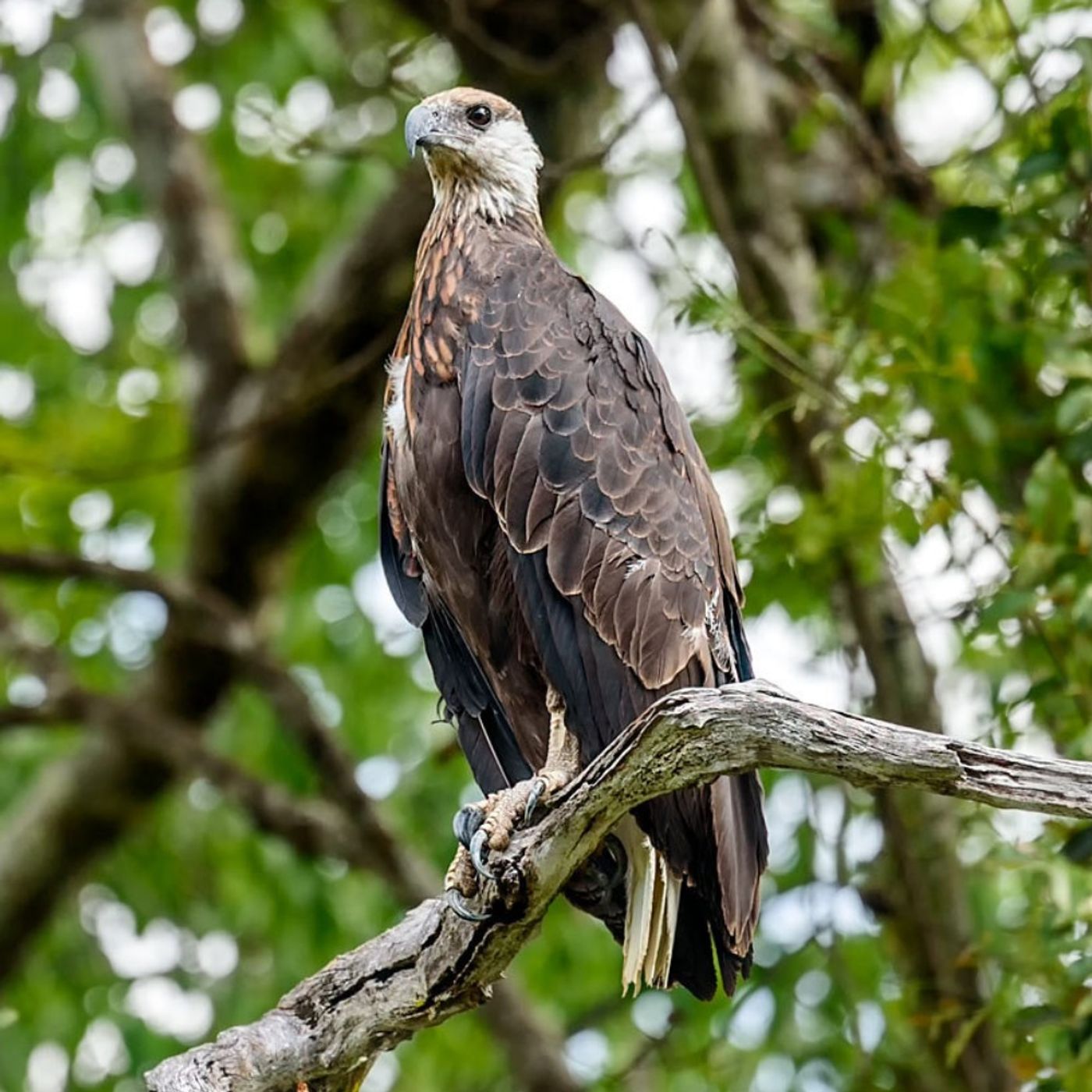
Biodiversity conservationist Lily-Arison Rene de Roland works with some of the rarest birds in the world. He’s the Madagascar program director for the Peregrine Fund, a non-profit conservation organization that protects imperiled birds of prey like the Madagascar Fish-Eagle. These large raptors only eat fish, which means they rely on the same diminishing wetlands and natural resources as some fishing communities. In this episode, Lily shares how community-centered conservation programs are helping to support Madagascar’s fishers and fish-eagles.
More info and transcript at BirdNote.org.
Want more BirdNote? Subscribe to our weekly newsletter. Sign...
Common Potoo: Branch or Bird?
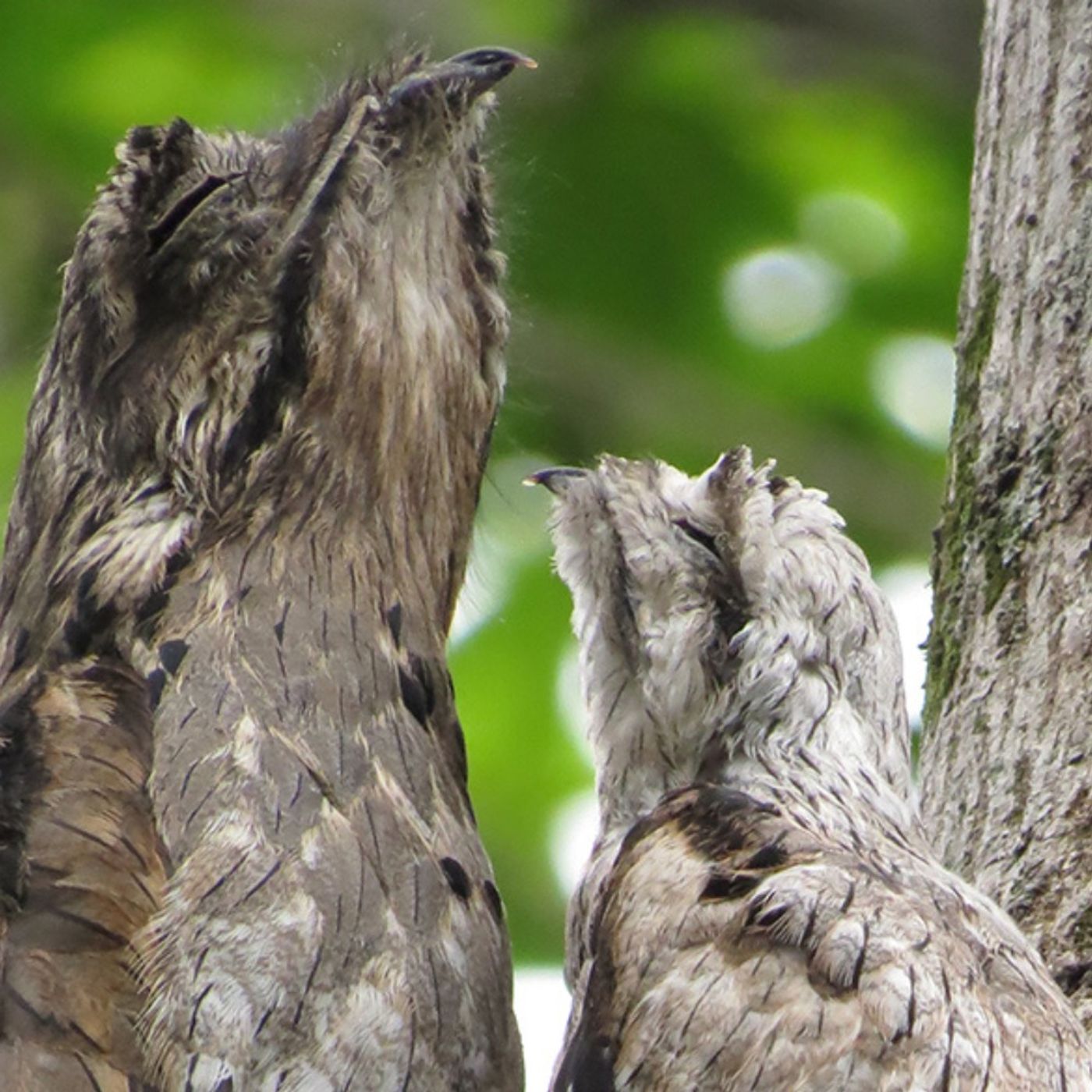
Common Potoos are champions of camouflage. In the daytime these nocturnal creatures perch perfectly still on branches: heads pointed upward, bodies outstretched, and eyes closed down to tiny slits. It’s hard to tell where the branch ends and the bird’s body begins — which helps them avoid predators. They’re birds more often heard than seen; with a melodious but mournful song, made at dawn, dusk and by the light of the moon. The song earned potoos the name ‘Poor-me-one’ in Trinidad and Tobago.
More info and transcript at BirdNote.org.
Want more BirdNote? Subscribe to...
The Gyrfalcon – A Circumpolar Raptor
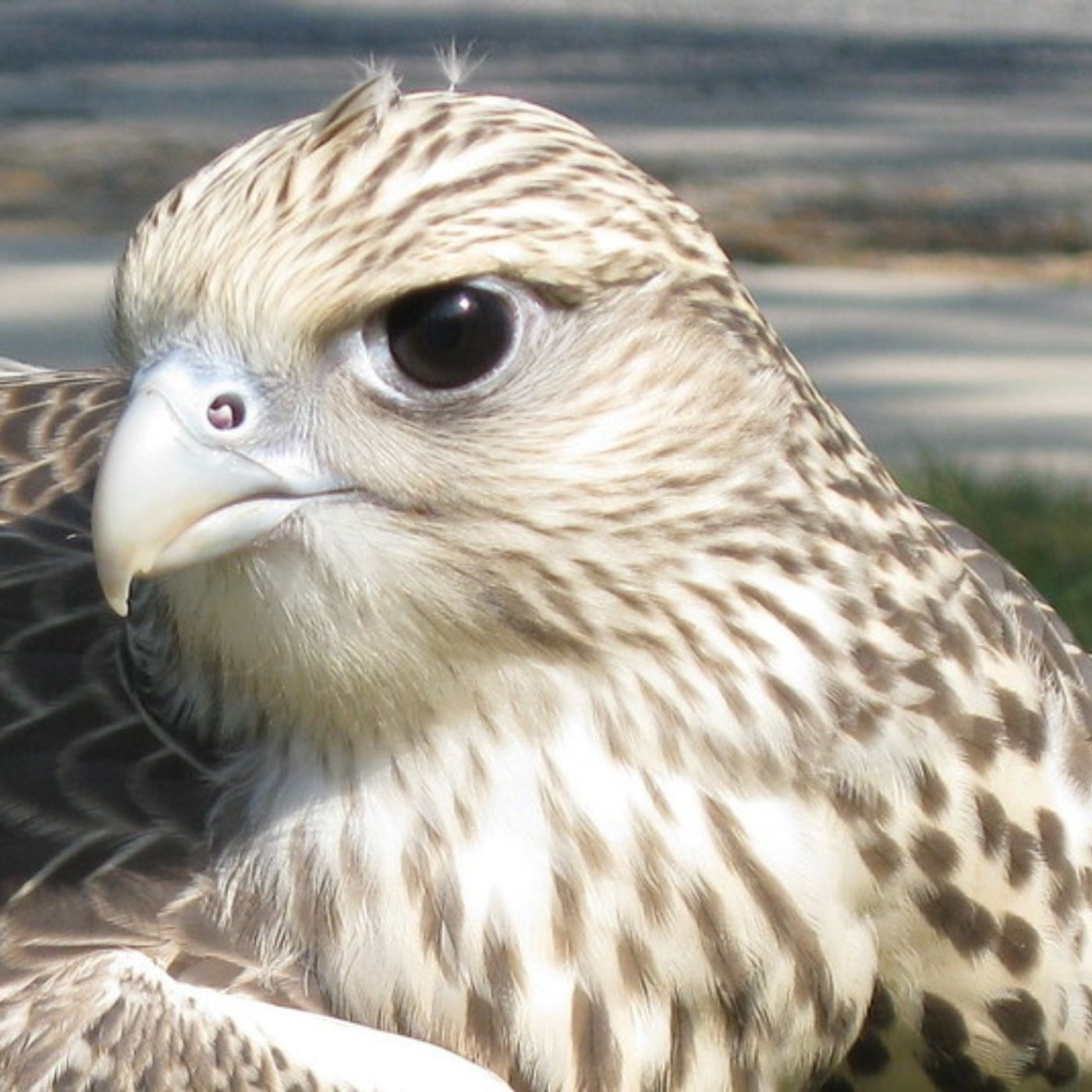
Gyrfalcons are circumpolar, nesting in the far north of Asia, North America, and Europe, including Iceland and Greenland. They evolved as a distinct species in the Pleistocene Era, around 100,000 years ago. Their large size and warm feathering gave them an edge for nesting high in the Arctic. Gyrfalcons reuse the same nesting site year after year, and some nests have been occupied for 2,500 years!
More info and transcript at BirdNote.org.
Want more BirdNote? Subscribe to our weekly newsletter. Sign up for BirdNote+ to get ad-free listening and other perks.
BirdNote is a n...
Jane Kim and the Wall of Birds

Walk into the visitor center at the Cornell Lab of Ornithology and you’ll be greeted by a massive mural called the Wall of Birds. About the size of a tennis court, the mural shows a map of the world covered in 270 life-sized portraits of birds and their relatives — ranging in size from the 30-foot-long, feathered dinosaur Yutyrranus hauli to the tiny Marvelous Spatuletail hummingbird. Artist and scientific illustrator Jane Kim partnered with the Cornell Lab to create this epic celebration of the evolution and diversity of birds, which was completed in December 2015.
Read more about Jane in F...
Costa Rica Pulses with Life
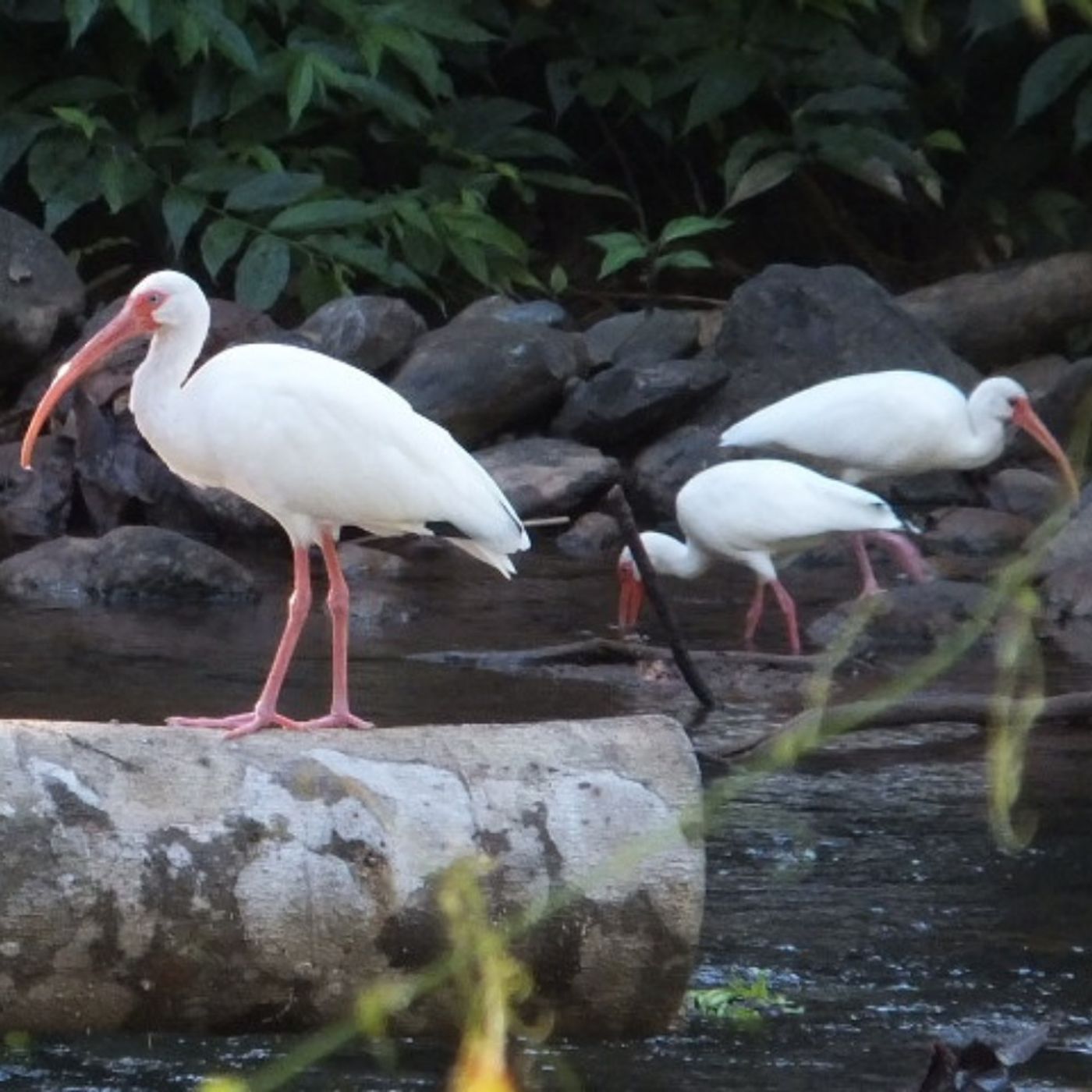
It’s early morning in Costa Rica. Tiny bats nestle in a tree after a night on the wing. A Great Kiskadee calls. Gray-capped Flycatchers sally forth from willow-like shrubs to catch insects in mid-air. White Ibis forage at the water's edge. Deep in a thicket, Black-hooded Antshrikes call. By noon, Chestnut-mandibled Toucans will shift lazily from one tree to another. In the evening, the sounds of cicadas give way to the sounds of crickets and a chorus of Marine Toads pours forth like no other. The land is pulsing with life!
More info and transcript at Bi...
The Birds of Yoga
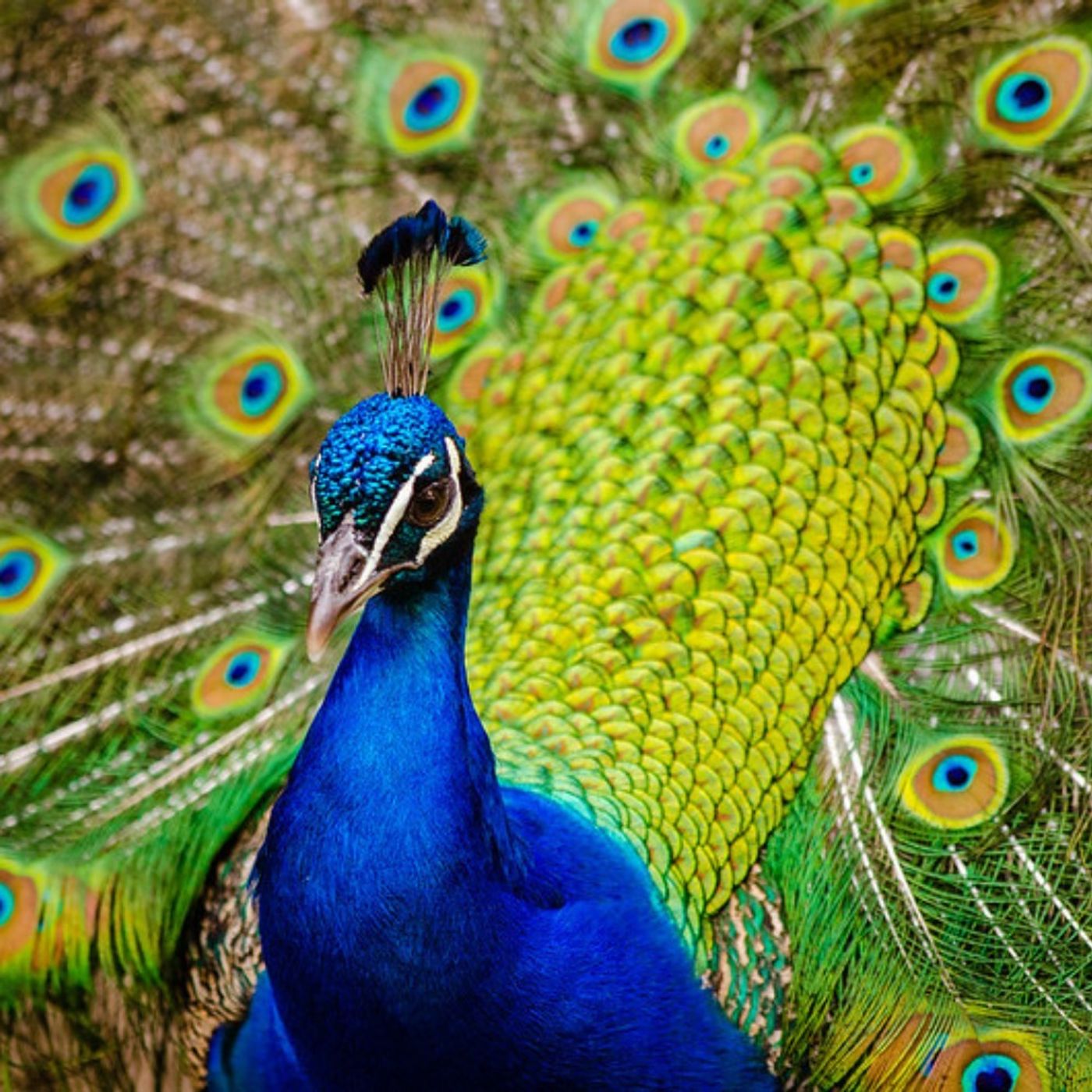
Pigeon Pose. Crow Pose. Eagle pose. Bird of paradise. Writer Trisha Mukherjee, who is also a yoga teacher, discusses the connections these bird-inspired yoga poses have with Hindu mythology and philosophy.
More info and transcript at BirdNote.org.
Want more BirdNote? Subscribe to our weekly newsletter. Sign up for BirdNote+ to get ad-free listening and other perks.
BirdNote is a nonprofit. Your tax-deductible gift makes these shows possible.
Hosted by Simplecast, an AdsWizz company. See pcm.adswizz.com for information about our collection and use of personal data for advertising.
Sparrow Loves Birds
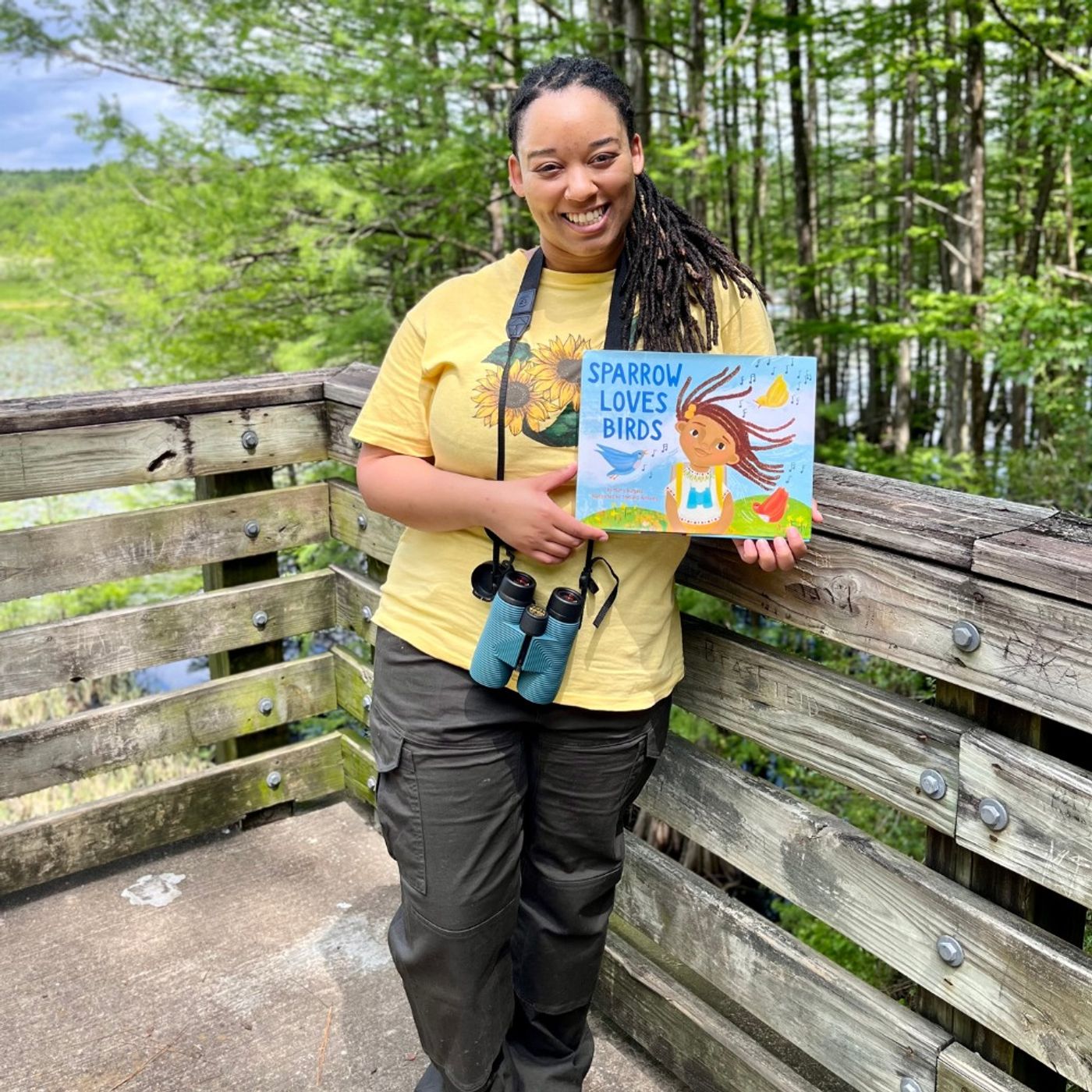
From an early age, urban ornithologist Murry Burgess loved to draw and tell stories – and that passion stayed with her as her love for birds grew as well. The joy Murry found in both art and science inspired her to write the children’s book Sparrow Loves Birds. The story follows the adventures of a curious 5-year-old girl named Sparrow as she meets her neighborhood birds. The book includes a field guide so that birders of all ages can learn to identify birds, too.
More info and transcript at BirdNote.org.
Want more BirdNote? Subscribe to o...
A Grandchild’s Song for Robins
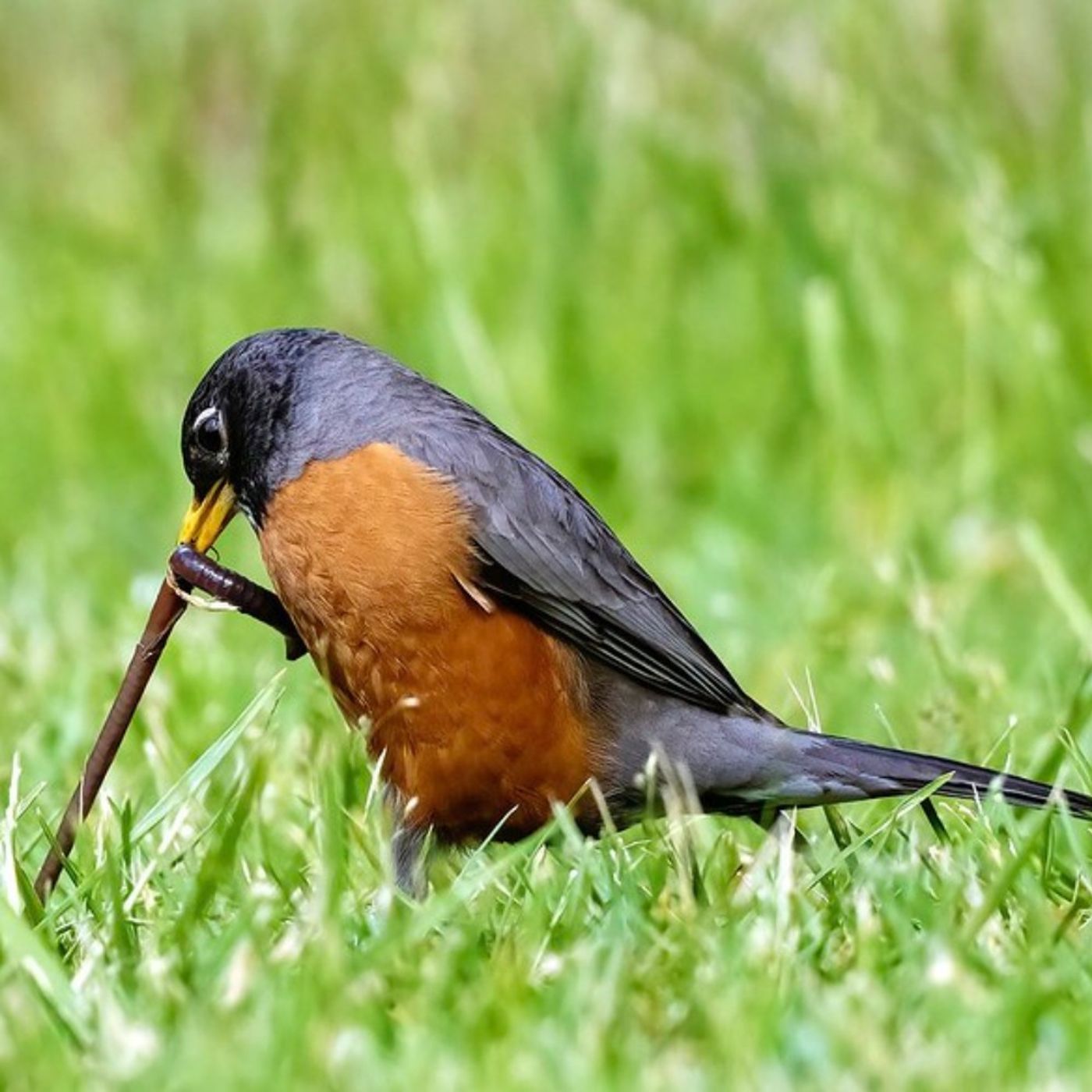
Ray Young Bear is a writer, musician and a member of Meskwaki Nation. He considers himself a word collector, writing poetry in both English and Meskwaki, his first language. And he enjoys taking photos of the birds around his home in Iowa. In the spring of 2021, he was spending time with his grandson, Ozzy Young Bear. He composed a song in Meskwaki about how his grandson enjoyed watching the robins hunt for earthworms. He later recorded the song for a music collection called, For the Birds: The Birdsong Project. Over 200 musicians, artists and writers contributed, with proceeds going to...
Why Do Birds Flick Their Tails?
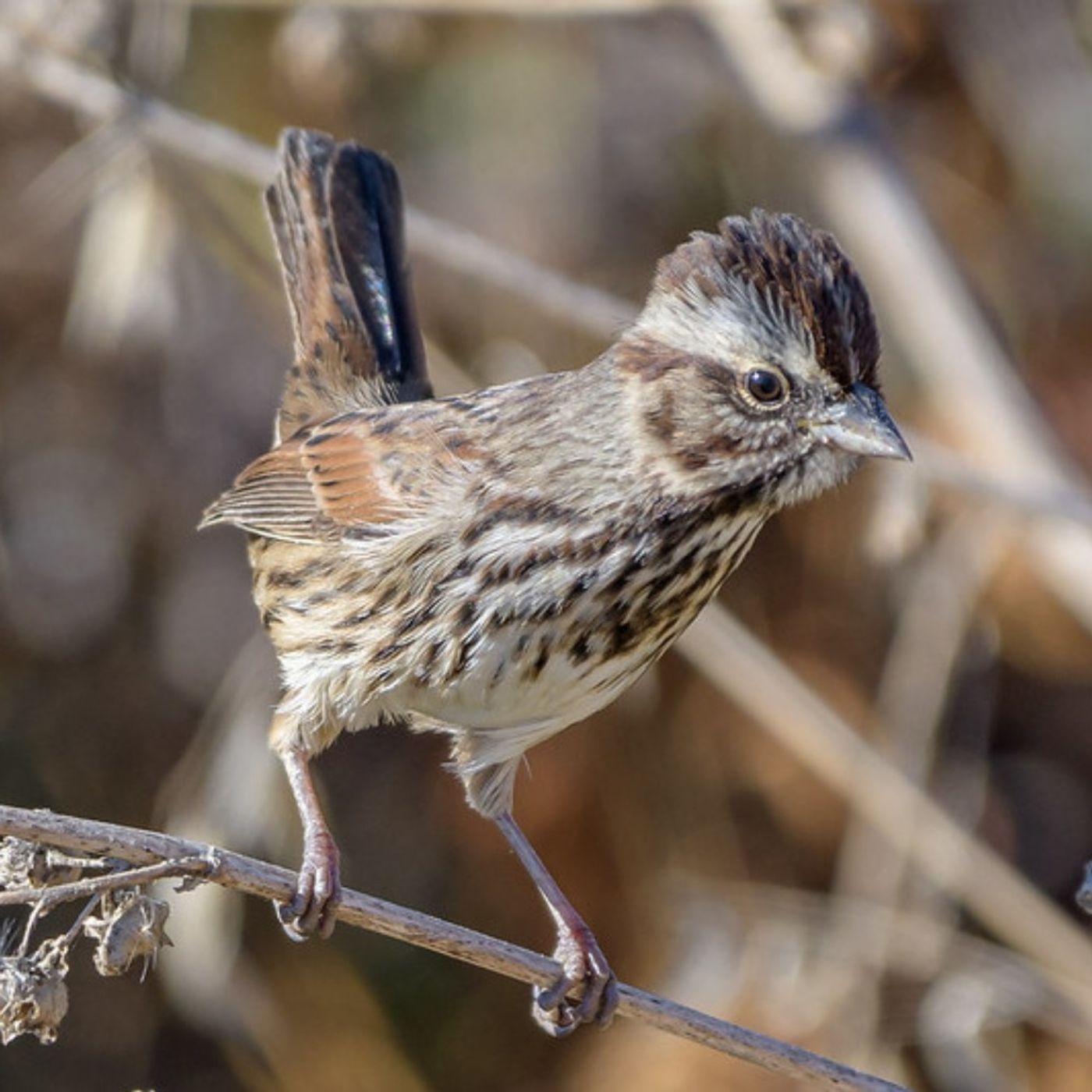
The way that some birds flick, wag, or flare their tails can be distinctive. A flicking or flashing tail might suggest to a predator that a bird is particularly alert or hard to catch, while also warning others in the flock of danger. Tail flicking can also help flush out prey. A Hooded Warbler — or a Song Sparrow, like this one — may flare its tail while foraging low to the ground to cause insects to jump, making them easier prey.
¡Escuche este episodio en español!
More info and transcript at BirdNote.org.
Want m...
Whooping Cranes: A Song That Was Nearly Silenced
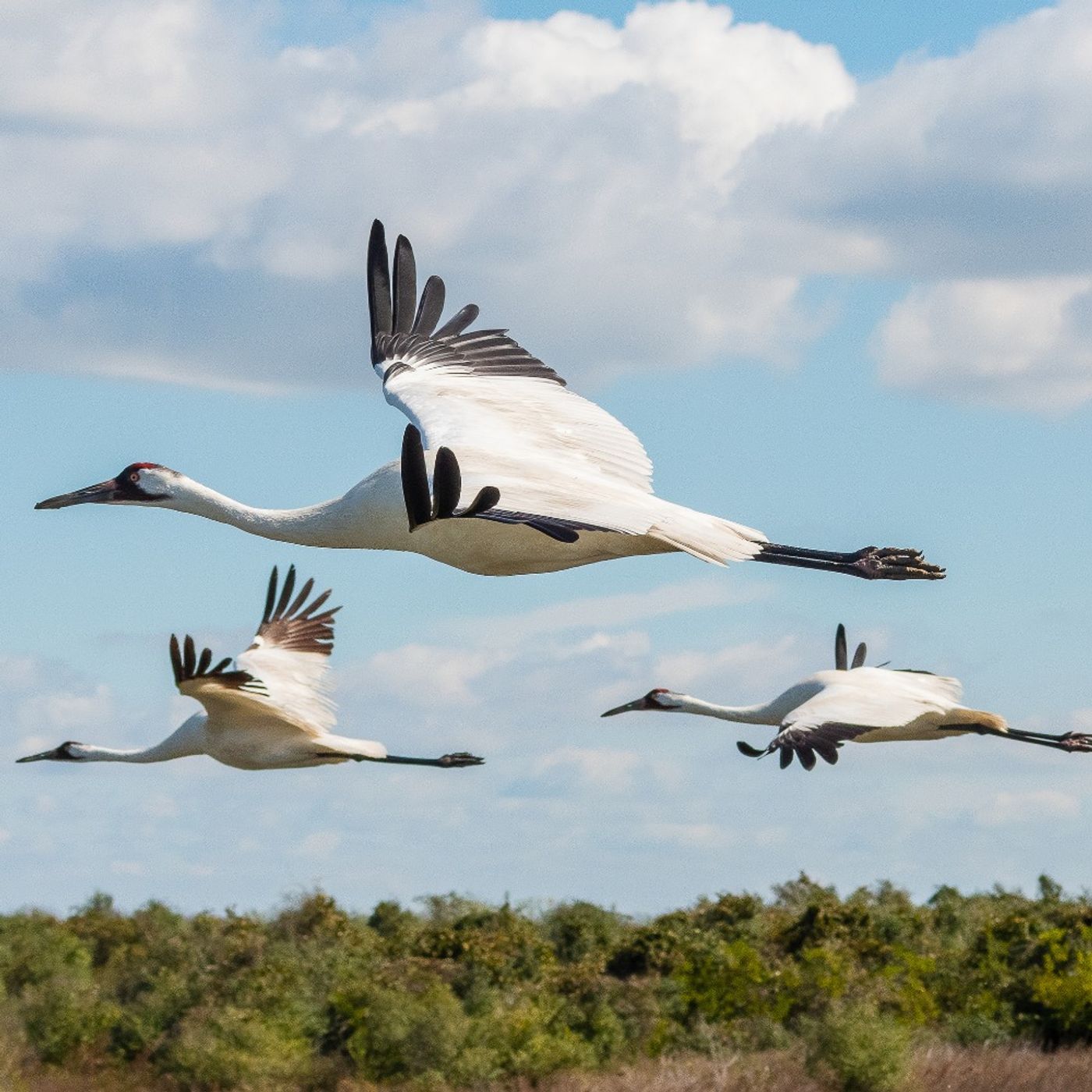
The Whooping Crane is the tallest flying bird in North America. These huge white cranes with a black mask and a splash of red on the crown came perilously close to extinction. By the 1940s, just 15 individuals remained in the wild. Decades of conservation efforts – both kooky and conventional – have helped their number grow to nearly 800. Today, the only self-sustaining wild flock migrates between Canada and Texas, while other populations survive with help from captive breeding programs.
More info and transcript at BirdNote.org.
Want more BirdNote? Subscribe to our weekly newsletter. Sign up for Bird...
The Music of Black Scoters
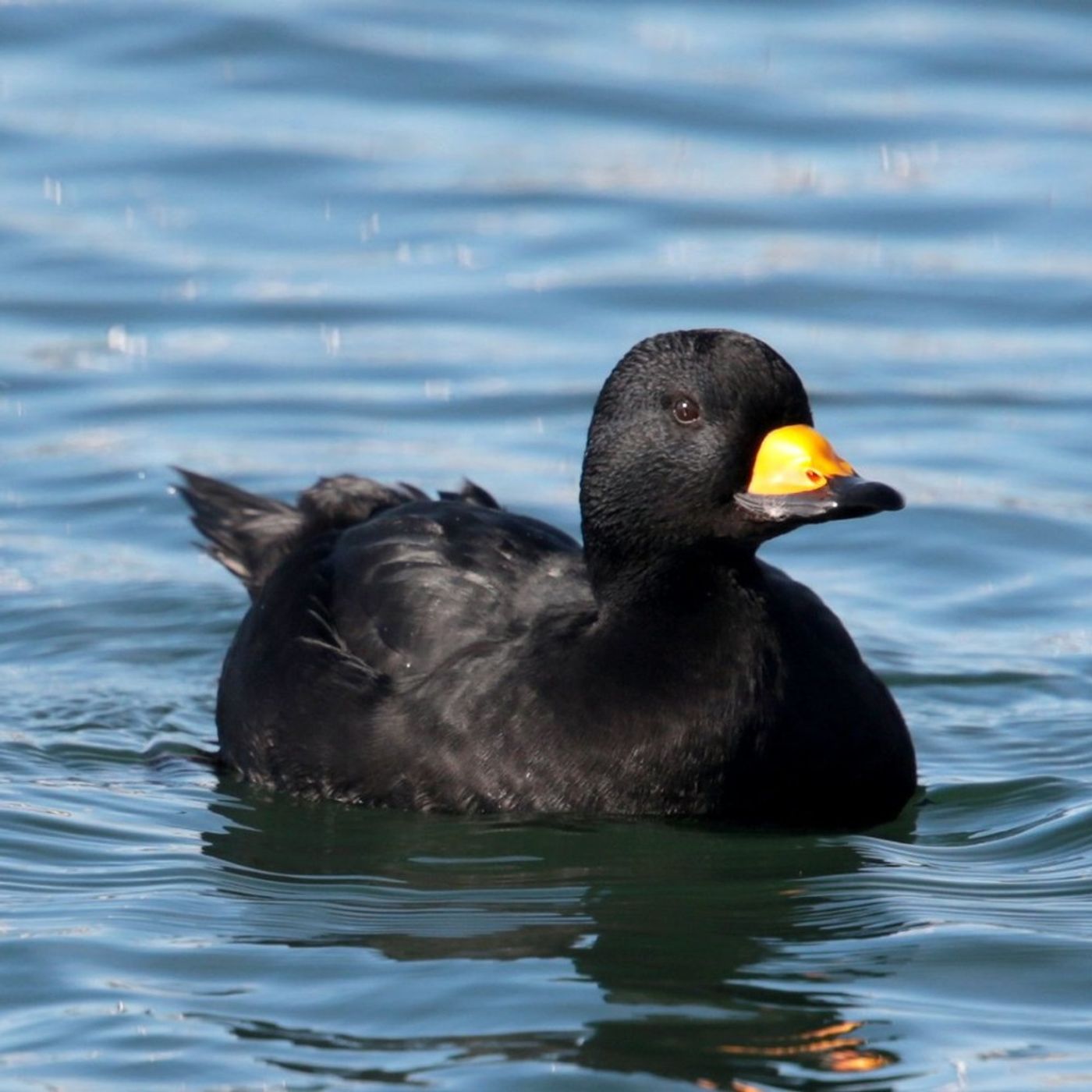
Black Scoters are sea ducks that spend the winter on saltwater bays. They are large, strong ducks and buoyant swimmers with a habit of cocking their tails upward. Black Scoters nest each summer on freshwater tundra ponds. Each fall, they can be found on bays all across the Northern Hemisphere. An unmistakable clue to their presence? Their mysterious, musical wail.
More info and transcript at BirdNote.org.
Want more BirdNote? Subscribe to our weekly newsletter. Sign up for BirdNote+ to get ad-free listening and other perks.
BirdNote is a nonprofit. Your tax-deductible gift m...
Pulling Rank at the Bird Feeder
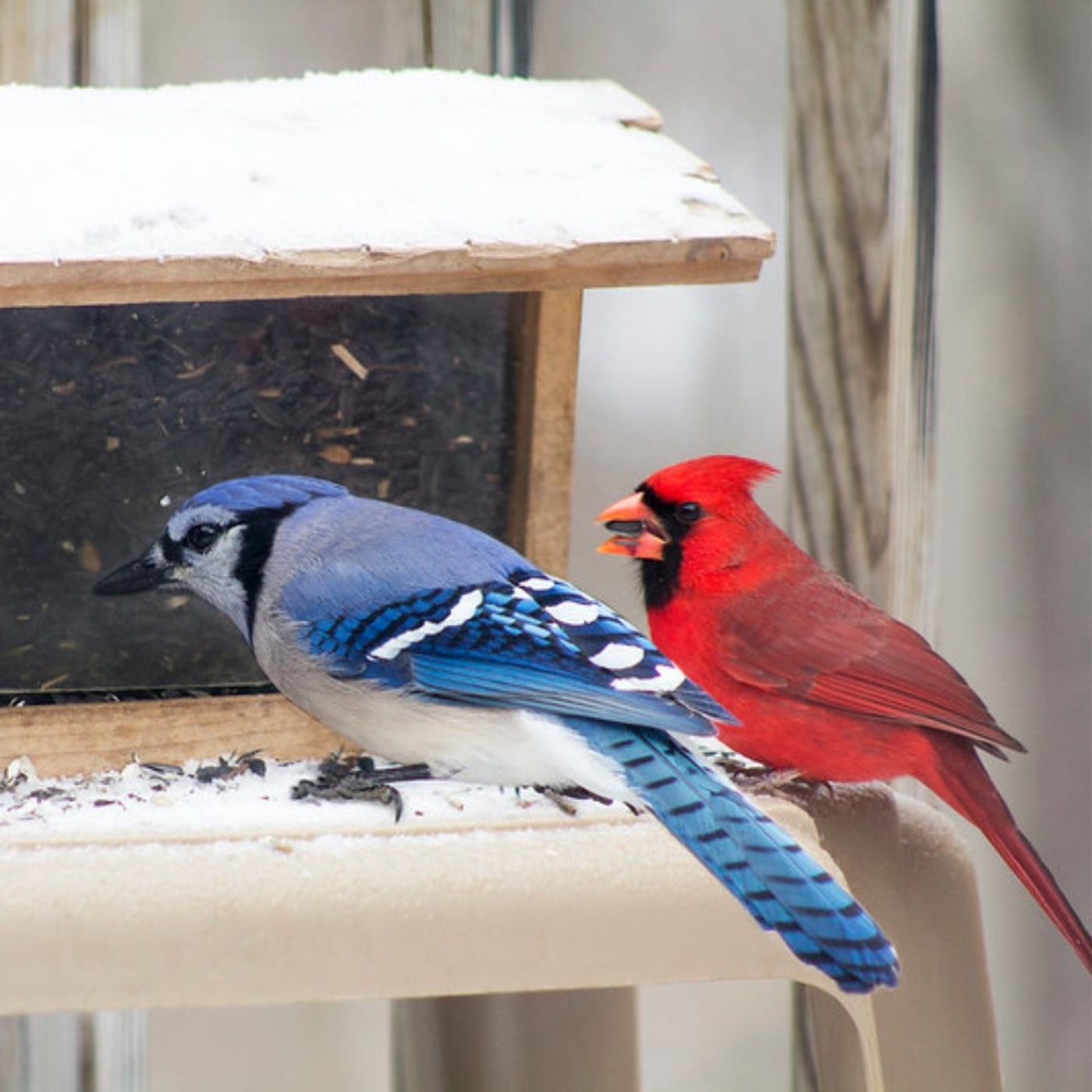
Bird feeders full of seeds or suet can spark nonstop action. Chickadees flitter in and out. Finches expertly crack one seed after another, while jays, doves, woodpeckers and sparrows all join the flurry. This might bring to mind a neighborly picnic — but it’s not quite as friendly. At any given moment, there’s a distinct hierarchy in effect. More dominant birds are usually able to displace lower-ranking birds. But not always! The next time you’re watching a bird feeder, try to figure out who’s in charge.
More info and transcript at BirdNote.org.
Want mor...
Left Foot or Right? Handedness in Birds
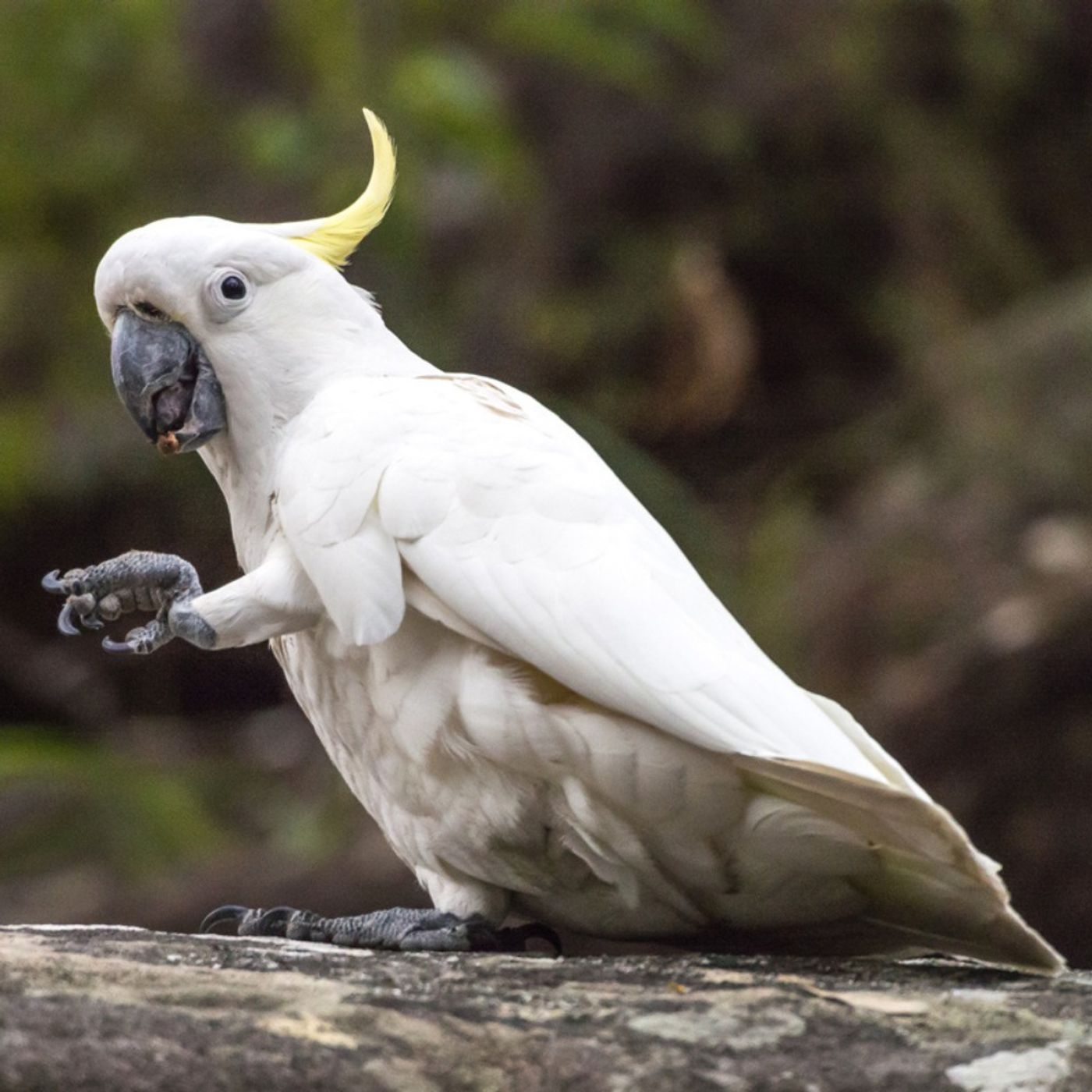
A parrot’s eyes are located on the sides of its head. So, if it wants to look at something — say, a delicious piece of fruit — it has to cock its head one way or the other do it. And if it looks with its left eye, then it uses its left foot. Scientists call this handedness. That’s when one hand or foot is used consistently over the other for doing complex tasks. Sulphur-crested Cockatoos are almost all left-handed ... that is... left-footed!
More info and transcript at BirdNote.org.
Want more BirdNote? Subscribe to our week...
Yellow Warblers in a Changing World
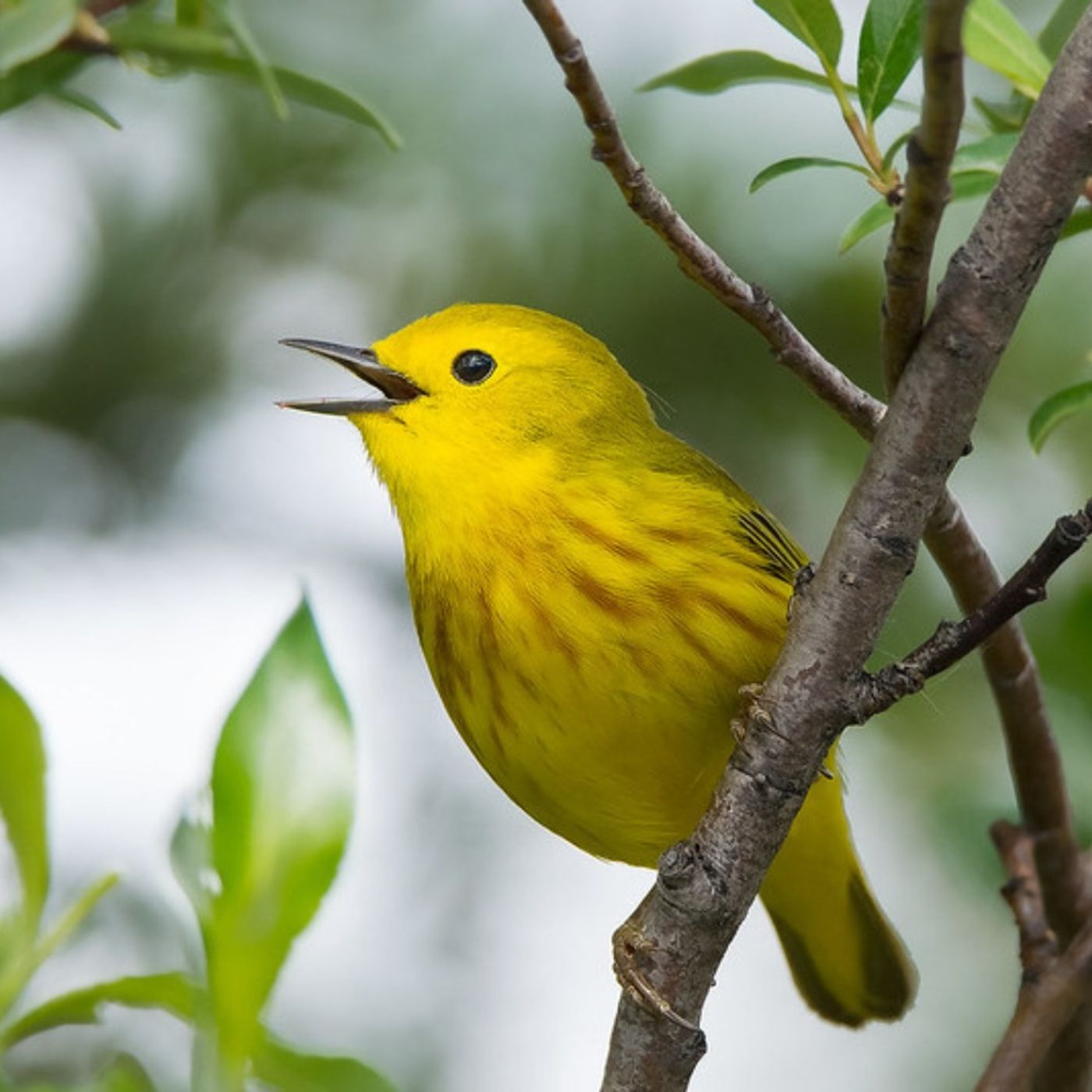
In spring and summer, Yellow Warblers sing from treetops to stream sides. While their beauty and songs commonly light up our most vibrant months, they face imminent challenges. Yellow Warbler populations have adapted genetically to their local climates. That makes them vulnerable to environmental shifts, which could cause the species to lose much of its breeding range in the U.S. by 2080.
A special thank you to artist Heidi Stavrevski for designing our 20th Anniversary Logo, which beautifully captures two decades of BirdNote Storytelling.
¡Escuche este episodio en español!
More info and tr...
Birdsong Mnemonics with Christian Cooper
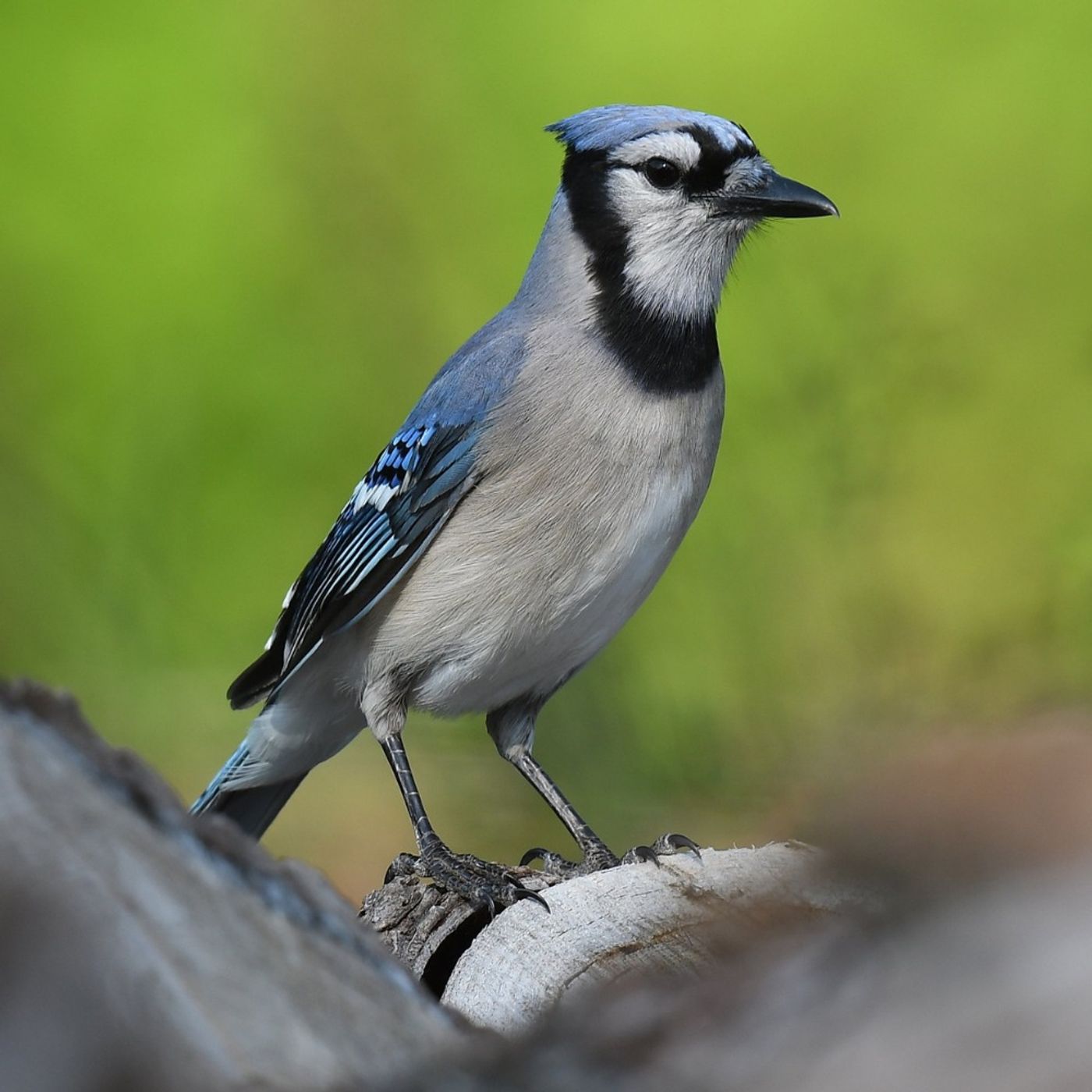
Birder and author Christian Cooper says learning to identify bird calls feels like unlocking a sixth sense. Birding by ear is a skill that takes time to develop, but you’ll start to recognize patterns with practice. Christian says mnemonics are a great way to remember bird calls. Some birds have well-known mnemonics, like the “Oh sweet Canada Canada Canada” of the White-throated Sparrow. But if those don’t work for you, make up your own!
More info and transcript at BirdNote.org.
Want more BirdNote? Subscribe to our weekly newsletter. Sign up for BirdNote+ to get a...
Play and Brain Size
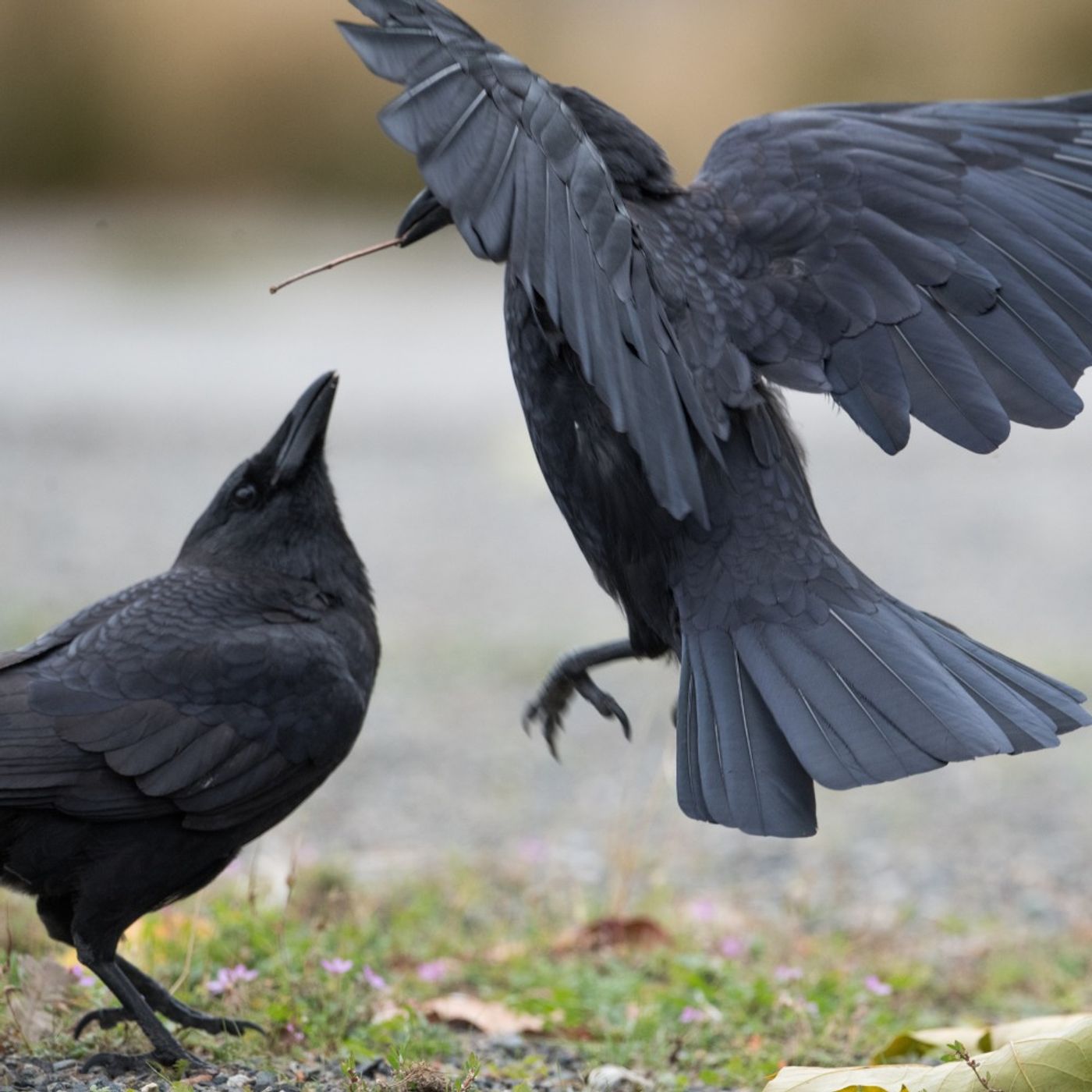
Many birds that play do it alone by swinging, sliding, or rolling around. Some species interact with objects, like dropping a stone and picking it up again. But a select few birds – like these crows – play with other members of their species. Scientists call this social play. It appears to have implications for the evolution of brain size among birds as well as our own species.
¡Escuche este episodio en español!
More info and transcript at BirdNote.org.
Want more BirdNote? Subscribe to our weekly newsletter. Sign up for BirdNote+ to get ad-fre...
The Eagle, the Cactus, and the City on the Lake

In one of the most iconic founding legends of the Americas, a Golden Eagle devouring a serpent atop a cactus marked the spot where the Mexicas would build Tenochtitlan, capital of the Aztec Empire. Over the centuries, that ancient metropolis transformed into what we now call Mexico City. Though the mythical eagle is now commemorated on the national flag of Mexico, real Golden Eagles need our help through conservation research and habitat protections.
¡Escuche este episodio en español!
More info and transcript at BirdNote.org.
Want more BirdNote? Subscribe to our weekly ne...
The Joy of Robins with J. Drew Lanham
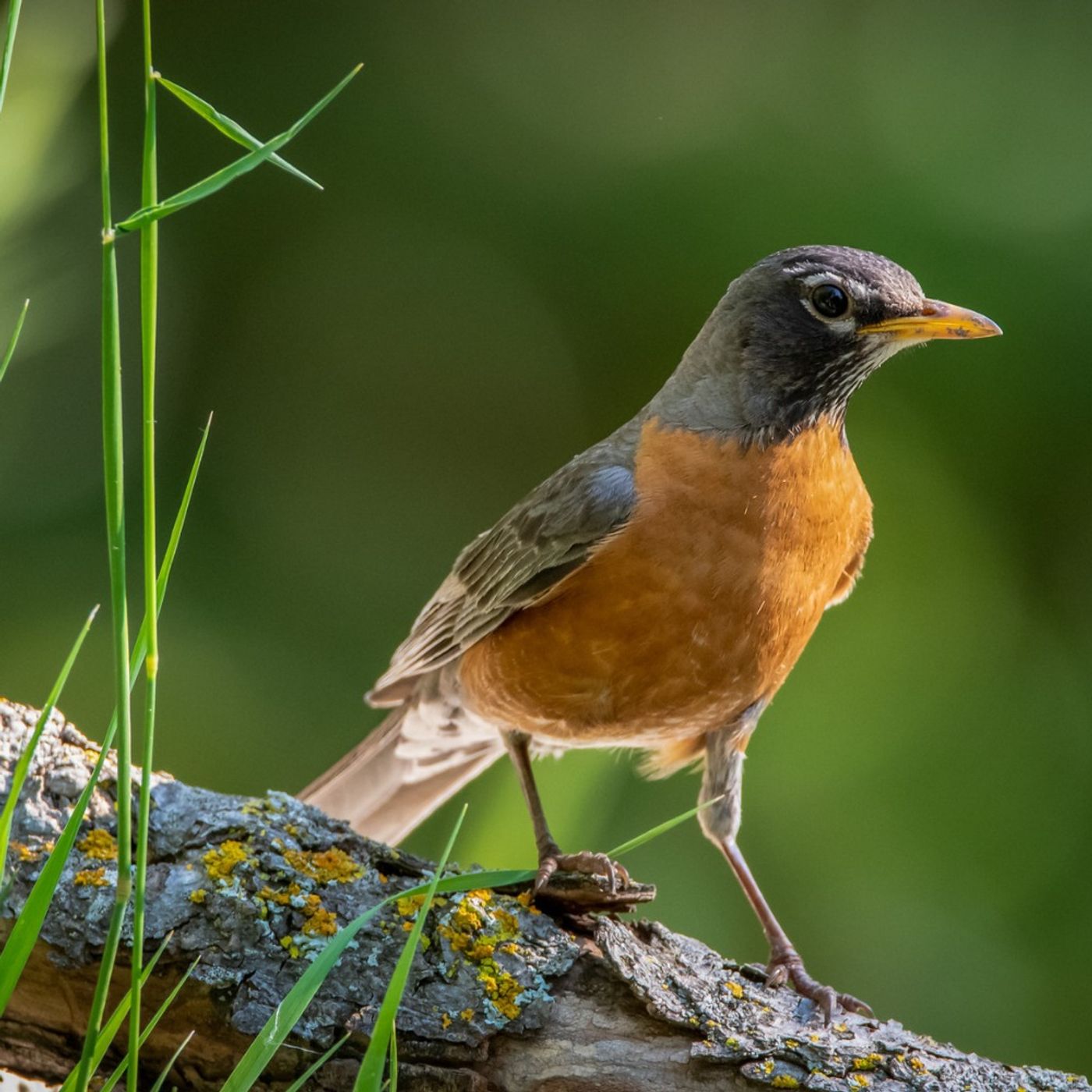
J. Drew Lanham is a poet and ornithologist whose work intertwines his lived experience as a Black man in the American south and his love of wilderness. Both have taught him that joy is a source of strength. On Bring Birds Back, Drew describes how he finds radical joy in spending time with birds like the American Robins.
Hear more from Drew about radical joy in season 7 of Bring Birds Back!
More info and transcript at BirdNote.org.
Want more BirdNote? Subscribe to our weekly newsletter. Sign up for BirdNote+ to get ad-free...
A Library of Feathers
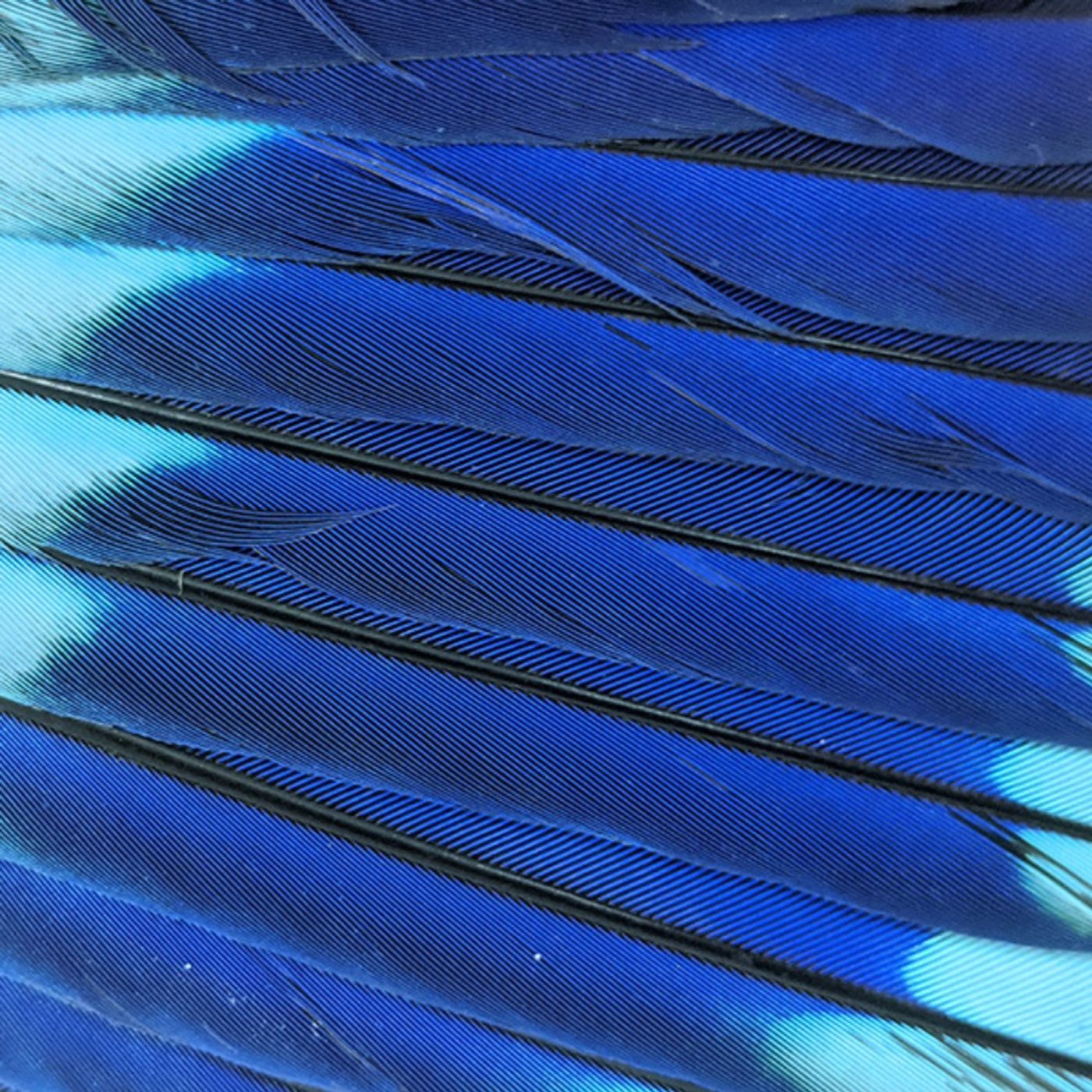
Esha Munshi co-founded the Feather Library, a digital library that collects and documents the feathers of Indian birds. Launched in 2021, the library has high-resolution photographs of more than 100 bird species. This library is open to everyone — whether you’re a researcher, birdwatcher, conservationist, or an ordinary person who came across a feather.
More info and transcript at BirdNote.org.
Want more BirdNote? Subscribe to our weekly newsletter. Sign up for BirdNote+ to get ad-free listening and other perks.
BirdNote is a nonprofit. Your tax-deductible gift makes these shows possible.
Host...
Red-throated Loons of Deception Pass
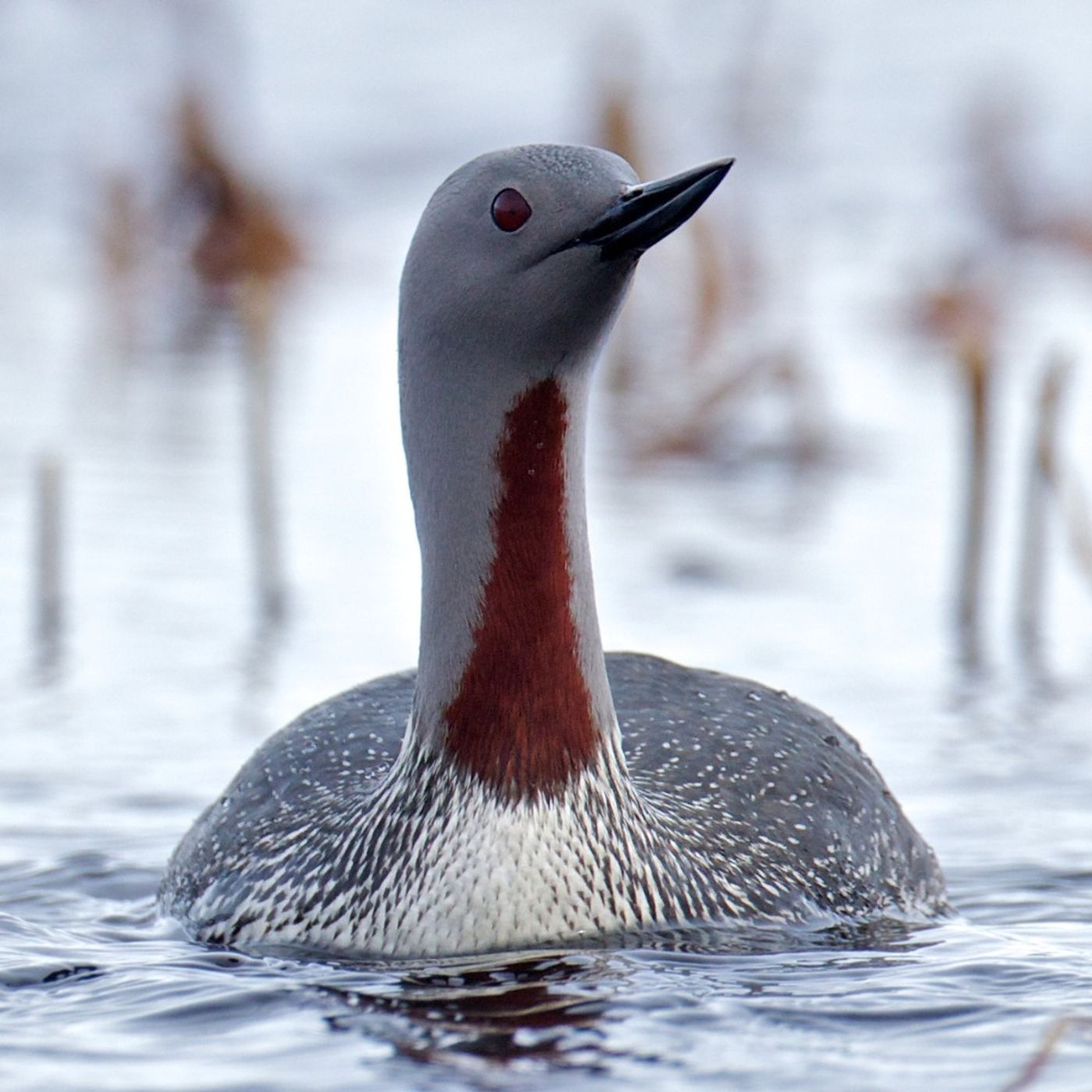
The word “loon” comes from the Old Norse word for “lame.” Because their feet are so far back on their bodies, loons cannot walk on land. But in flight, they’re graceful, and under water, they're swift in pursuit of fish. Red-throated Loons – like this one – breed in the far north and winter along both coasts of the United States.
More info and transcript at BirdNote.org.
Want more BirdNote? Subscribe to our weekly newsletter. Sign up for BirdNote+ to get ad-free listening and other perks.
BirdNote is a nonprofit. Your tax-deductible gift makes these sho...
